Is medium format worth it? Take a look at this hands on review of the Hasselbald X1D II 50C. The stunning color and large image sizes are really something to consider.
Hasselblad X1D Review
Today on The Slanted Lens we snuck over to a field next to my house and we’ve been over here before. But it’s quiet, we are all alone (social distancing) bringing you a new Camera Review, the X1D Mark II Hasselblad 50C.
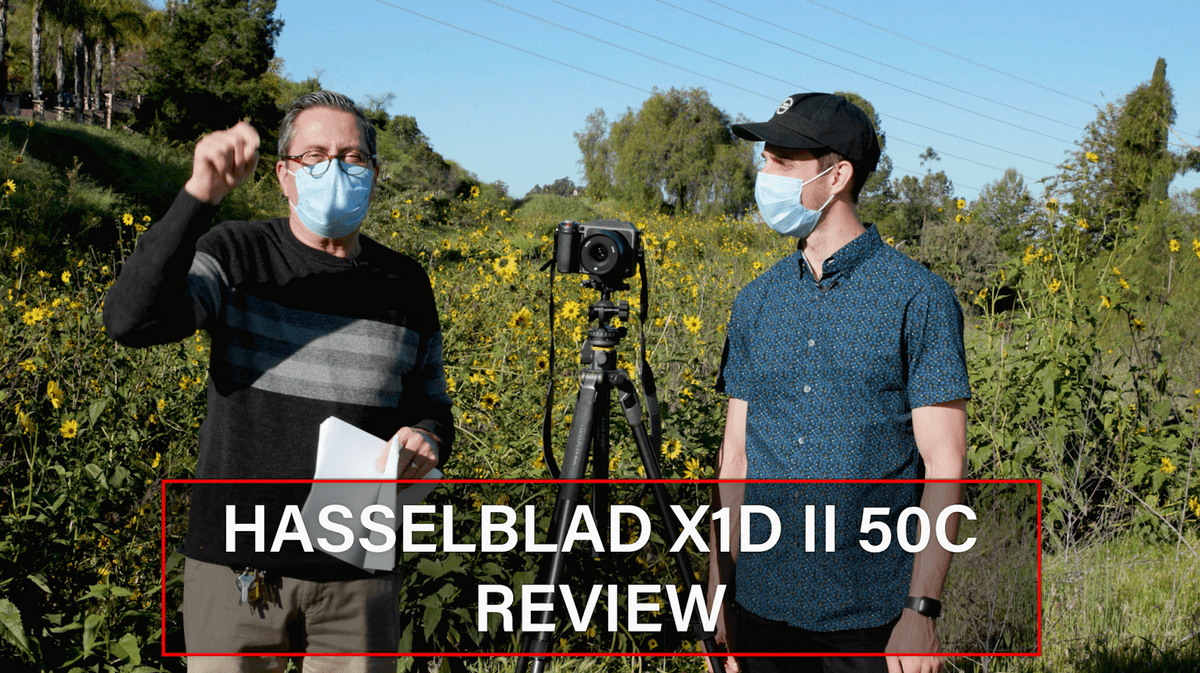
Join our Patreon group. https://www.patreon.com/theslantedlens
Yeah, it was really fun shooting in Hollywood today. Not many people around. Kind of different, different for Hollywood.
It’s fun down there because it’s a really huge tourist area but nobody’s there at 5:00 in the morning.
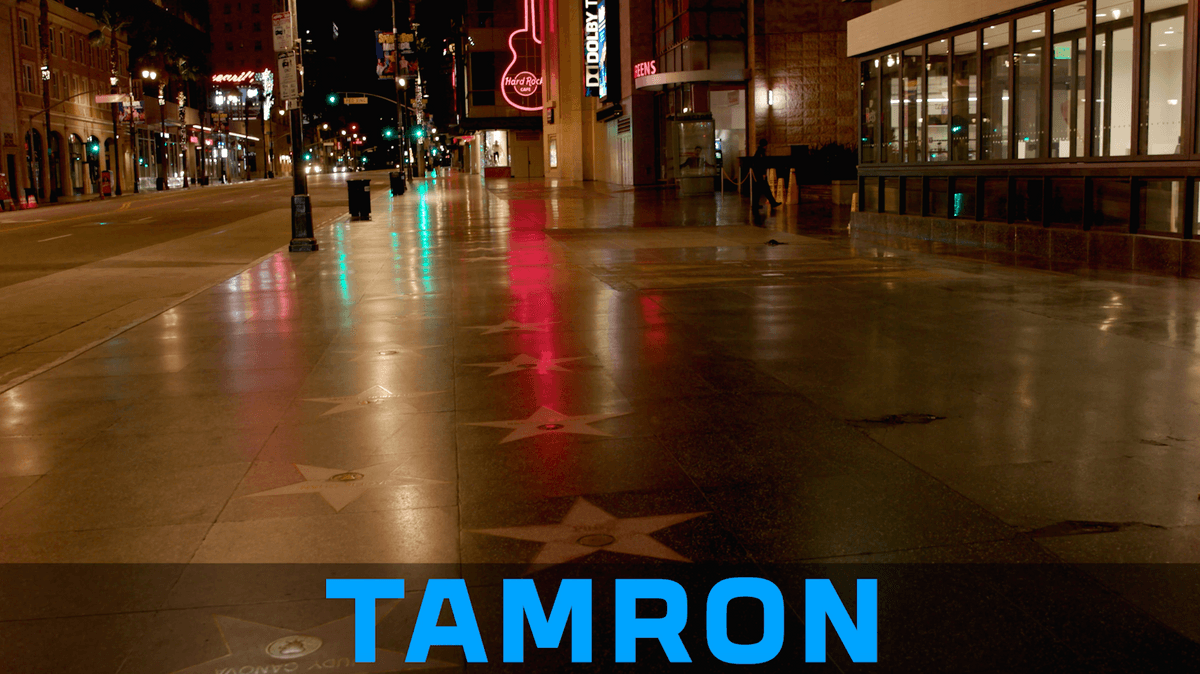
These medium format cameras, especially Hasselblad, are really good at capturing tonality and color so we shot the neon signs down there. We are also going to shoot sunflowers with the blue sky and green grass.
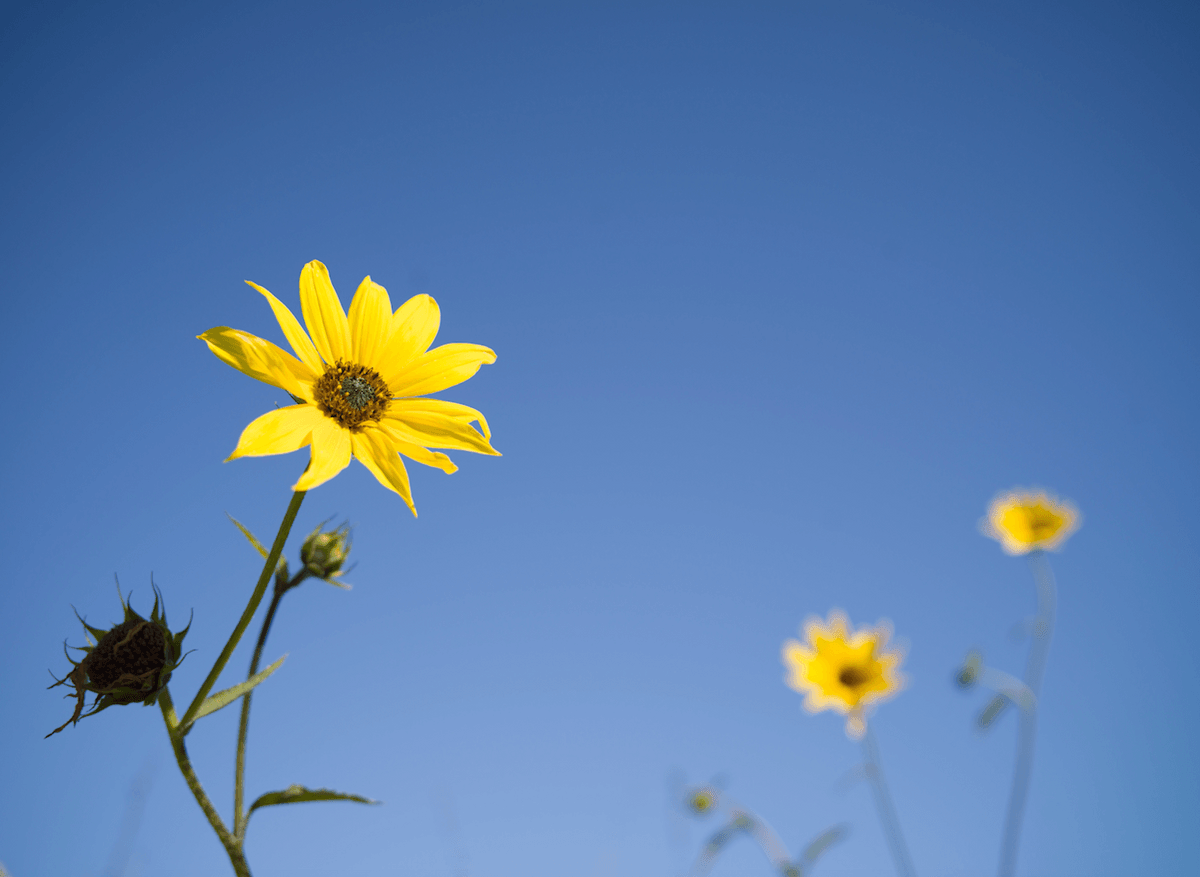
We are looking at a 50 megapixel sensor here. The 50 megapixels, it’s on a large sensor, it’s almost twice the size of a normal 35mm.
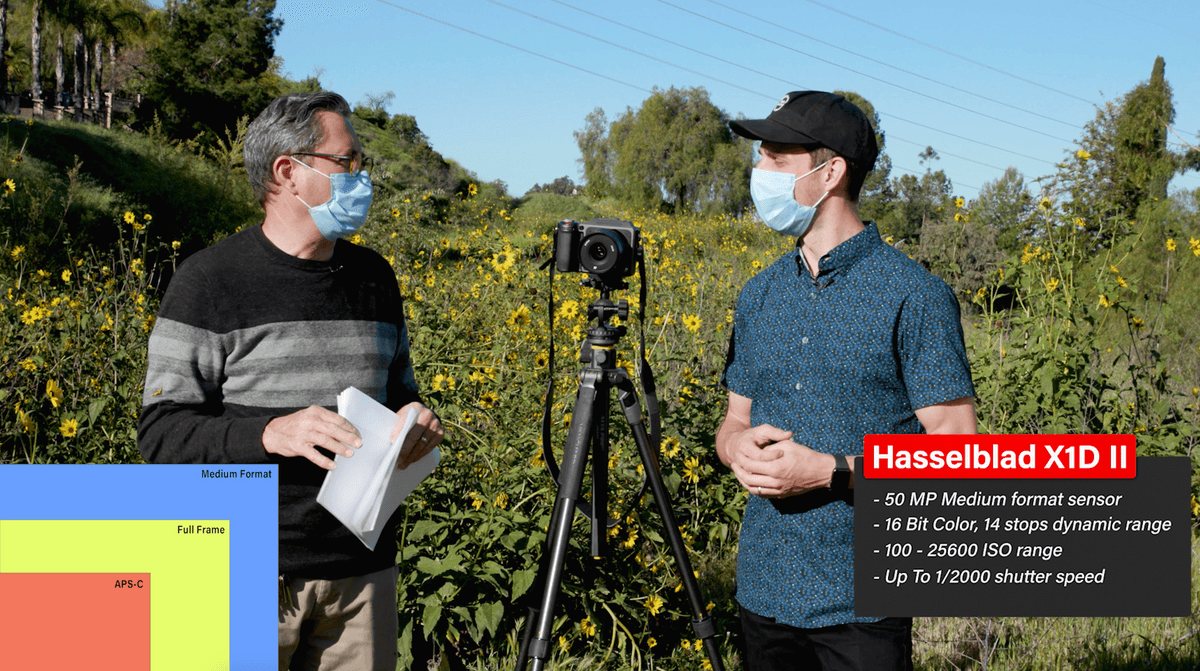
1.7 times the size of a full frame camera. So, it’s 50 megapixels but the pixels are bigger. Which allows you to collect more light and collect more information really. That’s why the colors and tonality come out so nicely with these cameras.
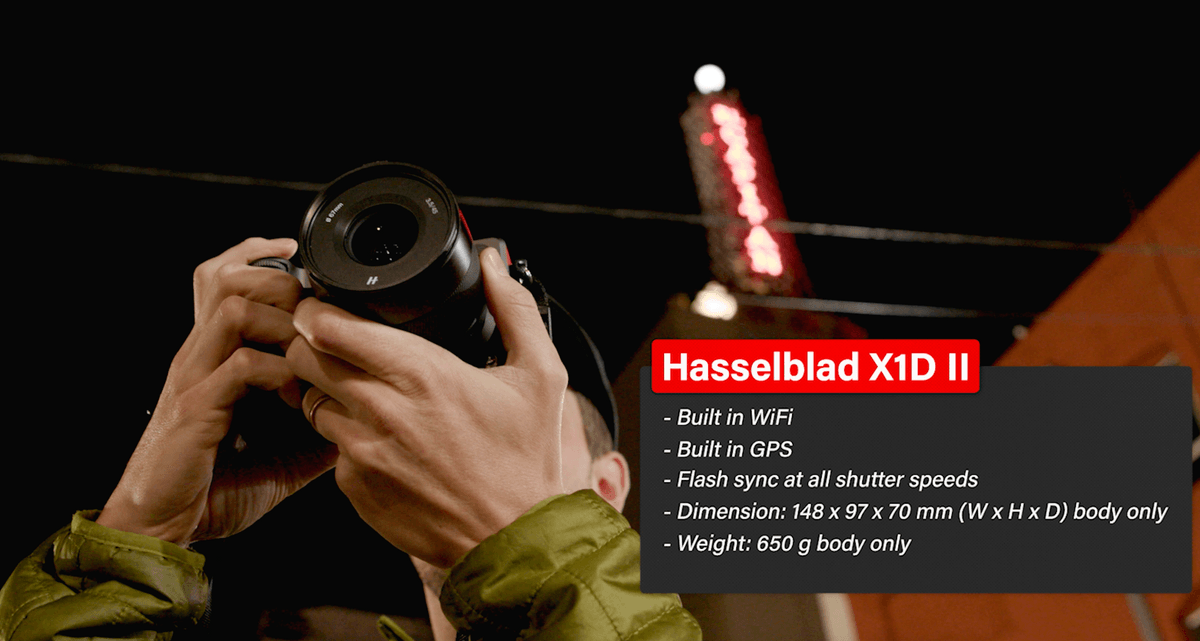
We’ve seen a huge upgrade from the first (digital) version of the Hasselblad. The first version of the Hasselblad was a little slow, a little sluggish. It seems like this one has resolved a lot of those problems because it is much quicker, responds quicker. It’s just all around a little quicker interface. When you think of full frame you think fast, quick, sports, being able to run and gun and shoot a lot. High frame rates, all those kinds of things. It was the same in the days of 35mm film vs 2¼ film. When you think of 2¼ the reality is you are slowing the process down. You are more deliberate, you are lighting things, you are setting things up. You are not shooting 30 frames a second. It’s not a sports camera. It’s made to give you really great images, portraits, great street portraits even. But it’s not meant to be a run and gun speedster kind of platform.
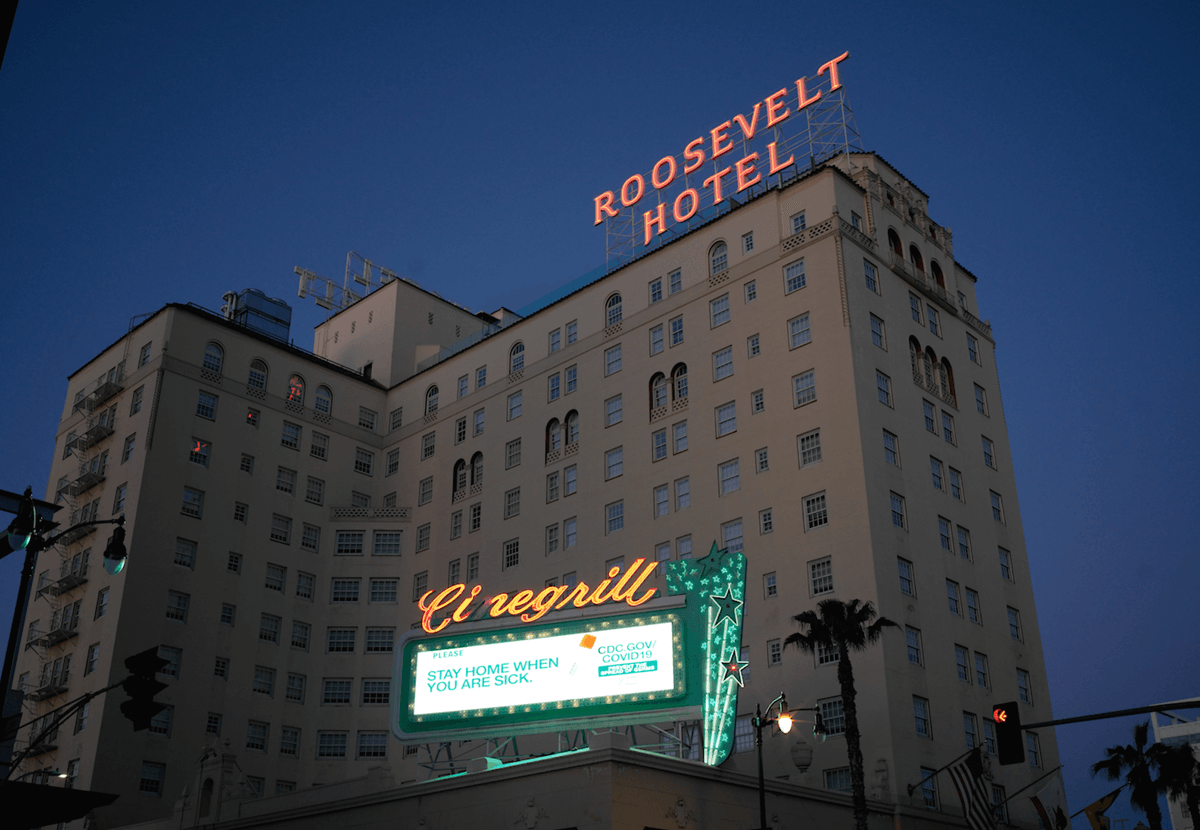
That said, this does shoot 3 frames per second RAW. And each RAW file is like 100 megabytes on average because they are 16 bit RAW files with 14 stops of dynamic range. I mean there’s so much information you are packing into each image. It’s really, really awesome. But, it is definitely for a slower work flow, a little more deliberate.
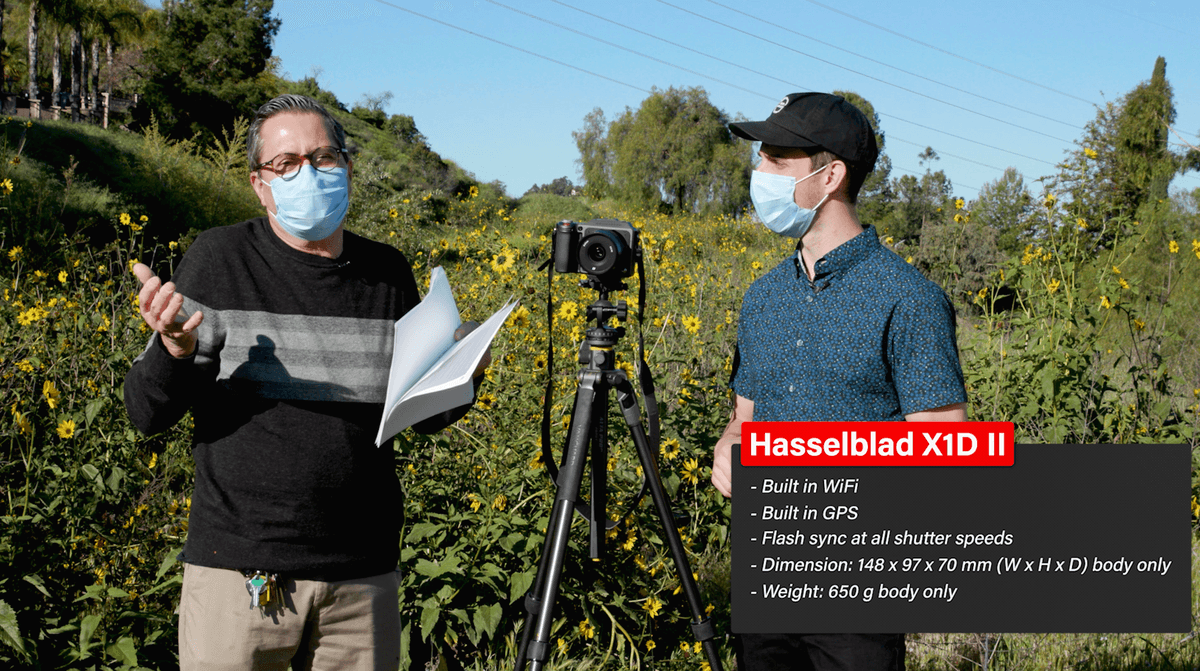
So we are going to go shoot some more, just see how this camera does. I’m sure we will see some things in it that maybe aren’t as perfect as we might sound right now. But, let’s shoot some more shots and see what we got.
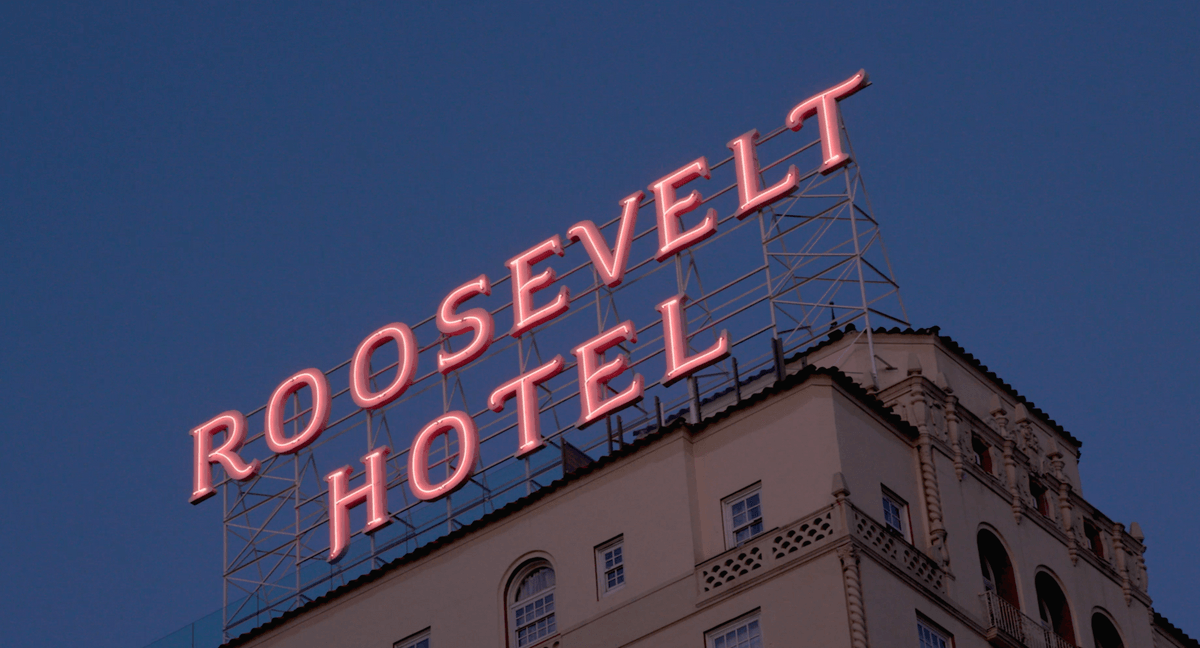
I love this shooting in this time of day when the sun is starting to rise because you have that sunlight and that gradient in the sky. From light blue to really deep blue. And then you also have a lot of other point sources and gradients from other lights like these neon lights that we are shooting. So, you get to see how the camera handles subtle tonality. Which I think is where medium format really shines because or that big sensor, larger image circle, lenses and the 16 bit RAW.
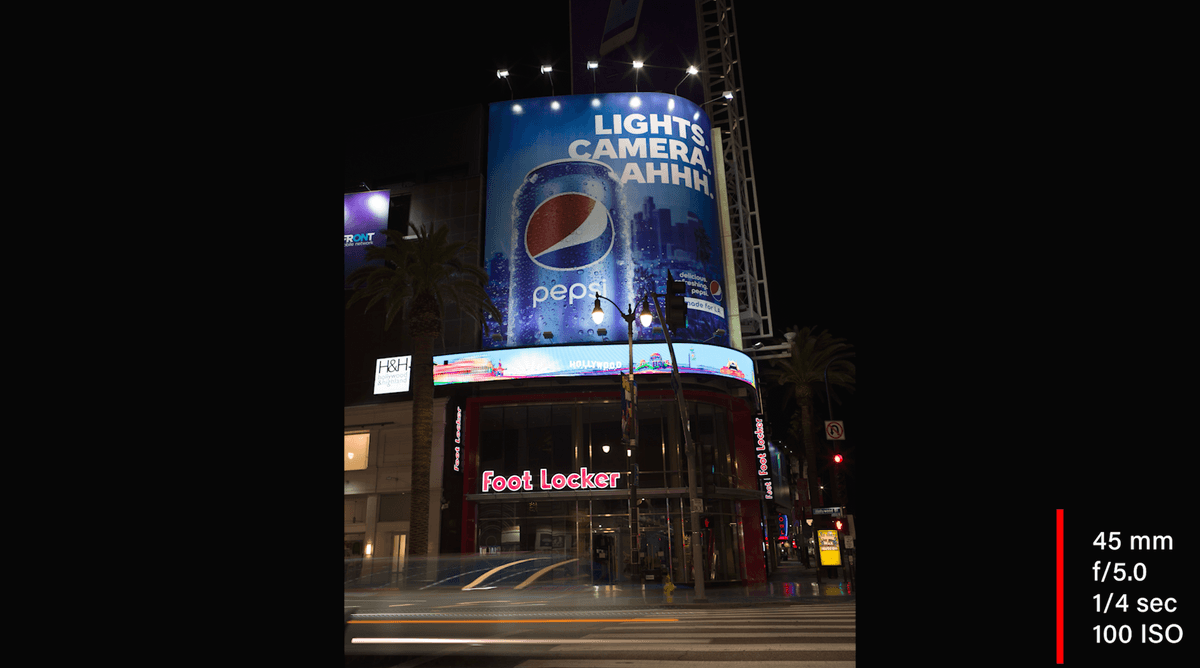
So here’s one of the first images we shot. I like this one because we have the streak from the car moving through at the bottom of the frame. I mean it’s not an amazing image but there’s some fun things here. The lens flares from these lights over the sign are awesome and you are going to see that throughout these really cool stars.
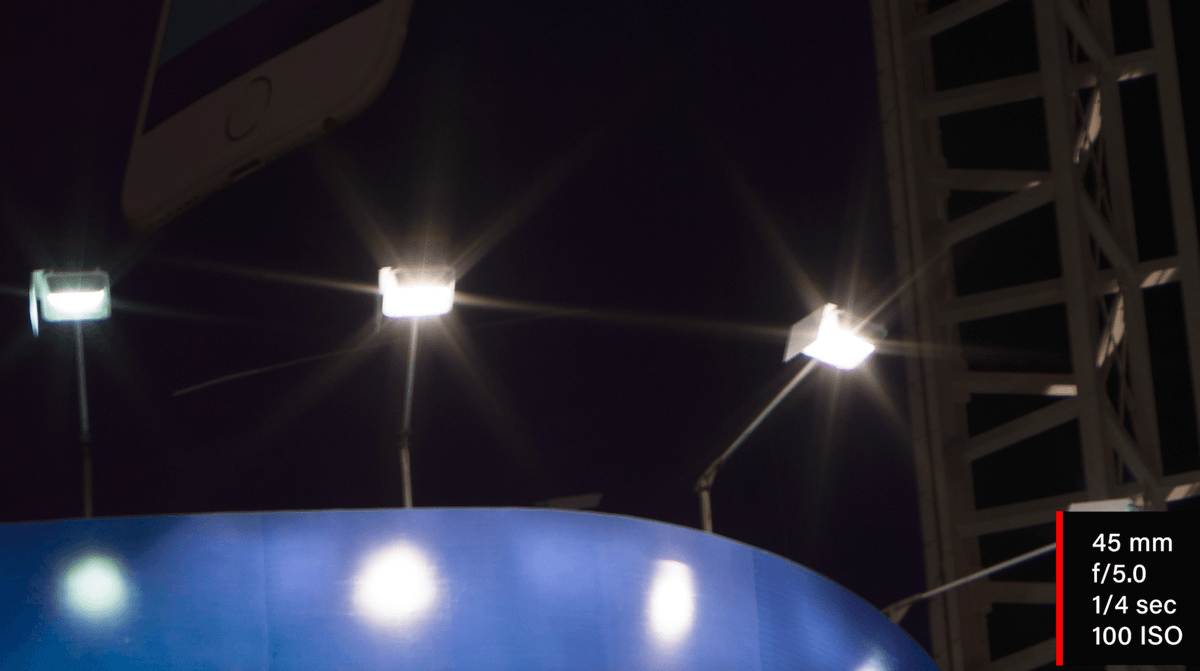
And this for the aperture is wide open right? (Wide open is f/3.5. This was shot at f/5.0.)
Yeah, I believe we shot most of this wide open. Because usually when you get a flare like that, it’s when you are stopped down to f/11 or f/16. So that’s interesting.
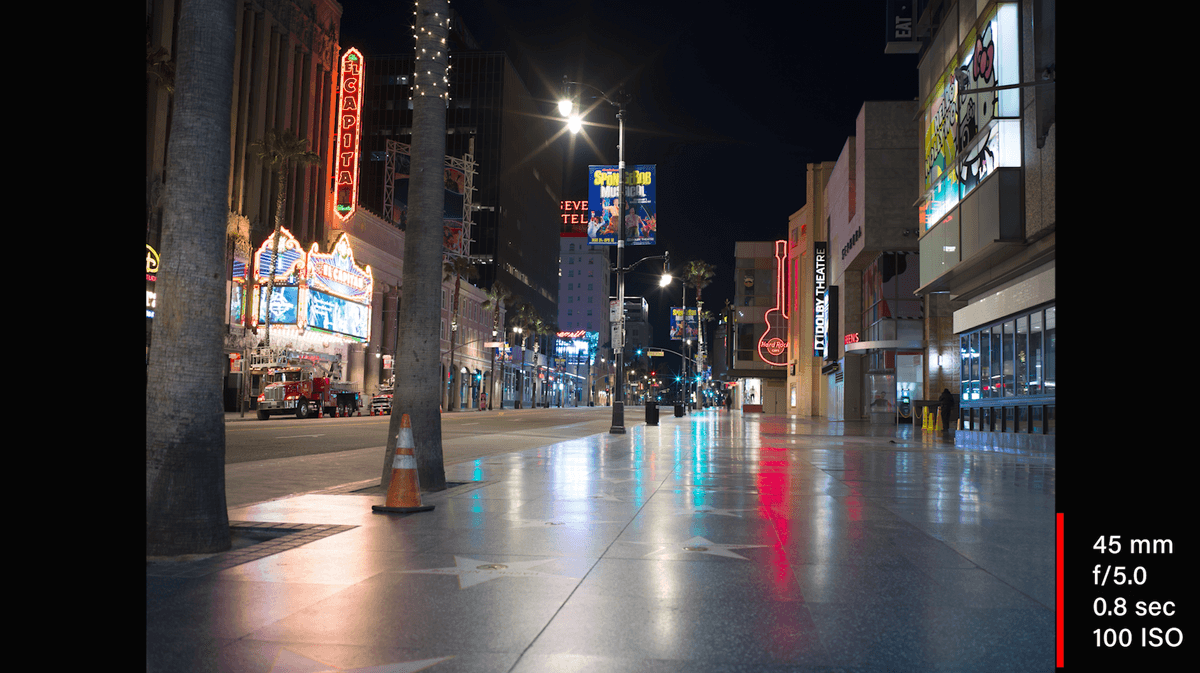
I love these reflections in the star walk because the pavement is to shiny.
The color is just spectacular. I mean even like you said, the El Capitan on the left here, it’s still, even though it is overexposed there, it’s still holding color and you don’t feel like it’s just gone.
Yeah, it’s not pushing those reds into like a weird purple or anything like that. You’ll see that with other cameras because they don’t know what to do when the color goes out of gamut.
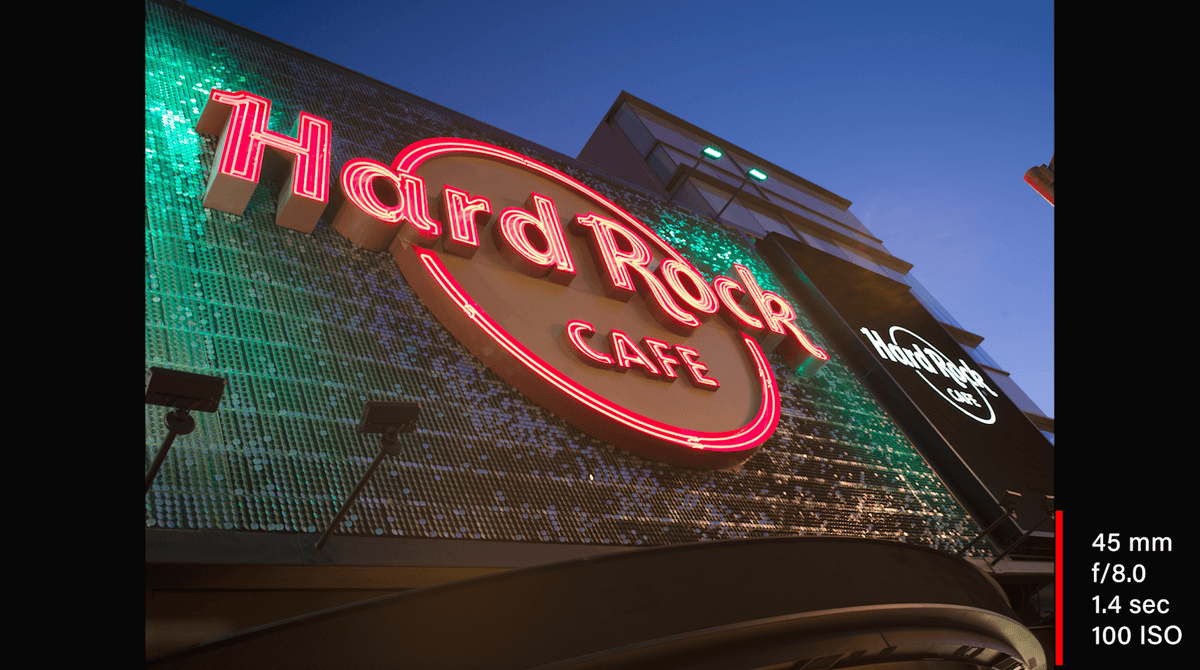
And again, here you have on the far right side of the image you have that pale blue and then it goes into this really deep blue and the colors are so rich. And that turquoise sort of green. What I love about these images is there is so much depth to them. And then the subtlety of the tones in this image of the entrance to the Dolby. The colors are so subtle. But the camera doesn’t make them all the same color.
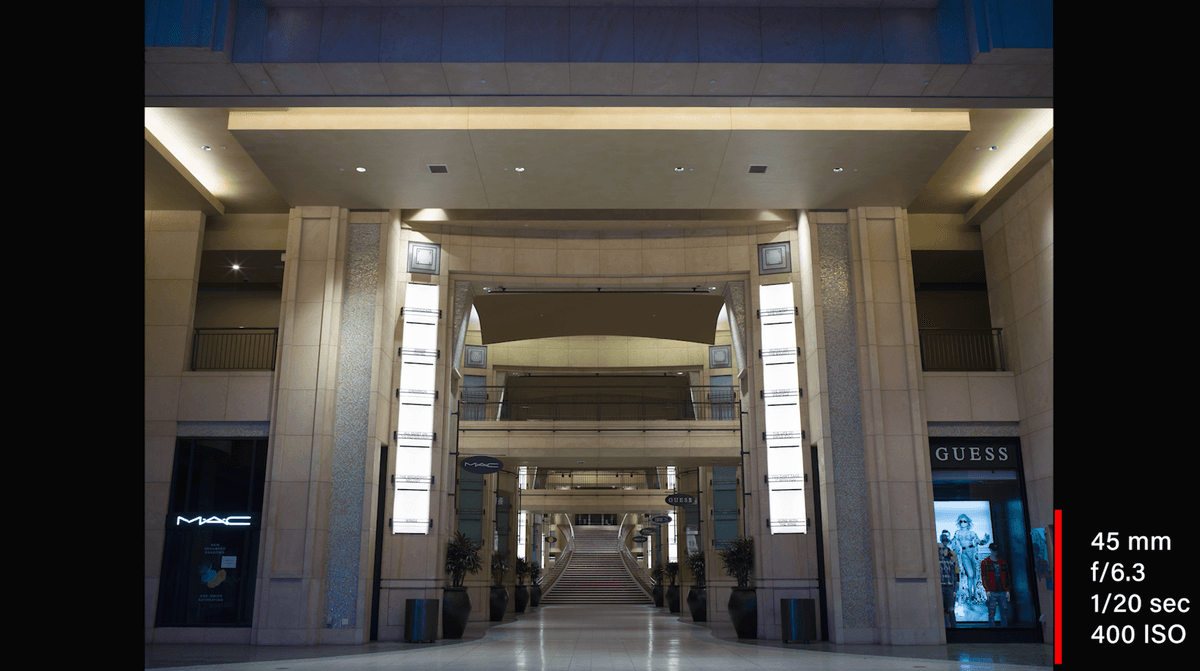
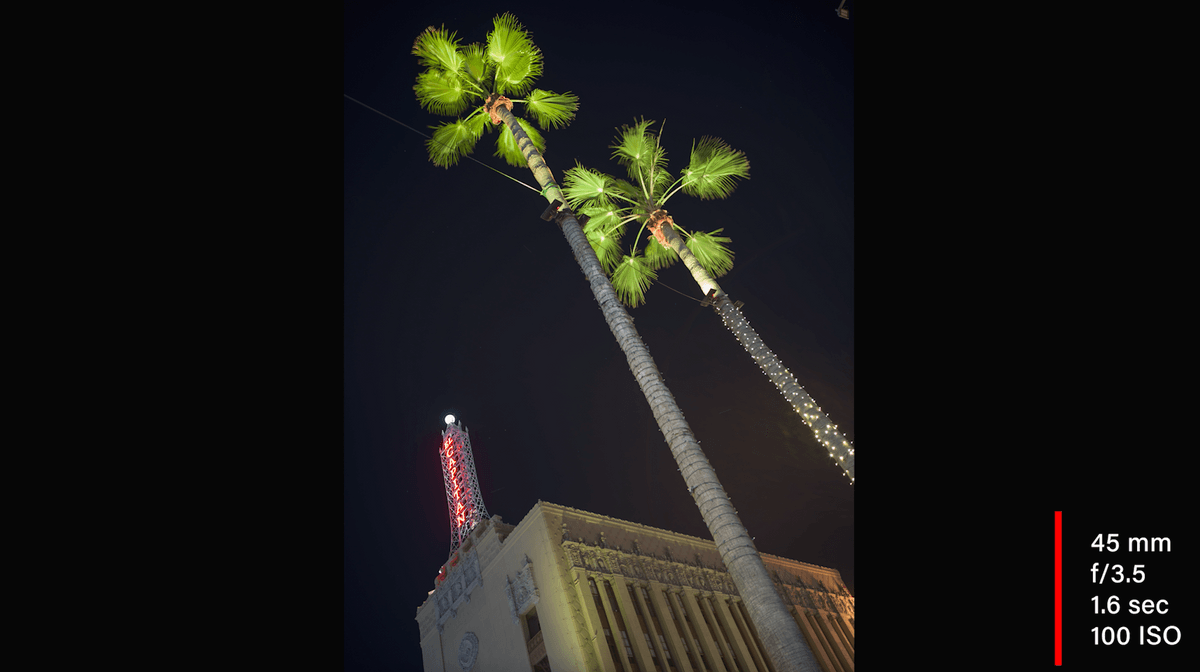
So, if you look at the shot of the two palm trees, the thing about this camera that I did find a little bit difficult was you don’t have a pop out screen. So when you get that camera down low trying to look up at those palm trees, I’m down low and that is a little bit difficult. I wish it had a pop out screen. I can’t imagine how hard that would be on a camera like this. But, that is one thing I was missing when it was down low.
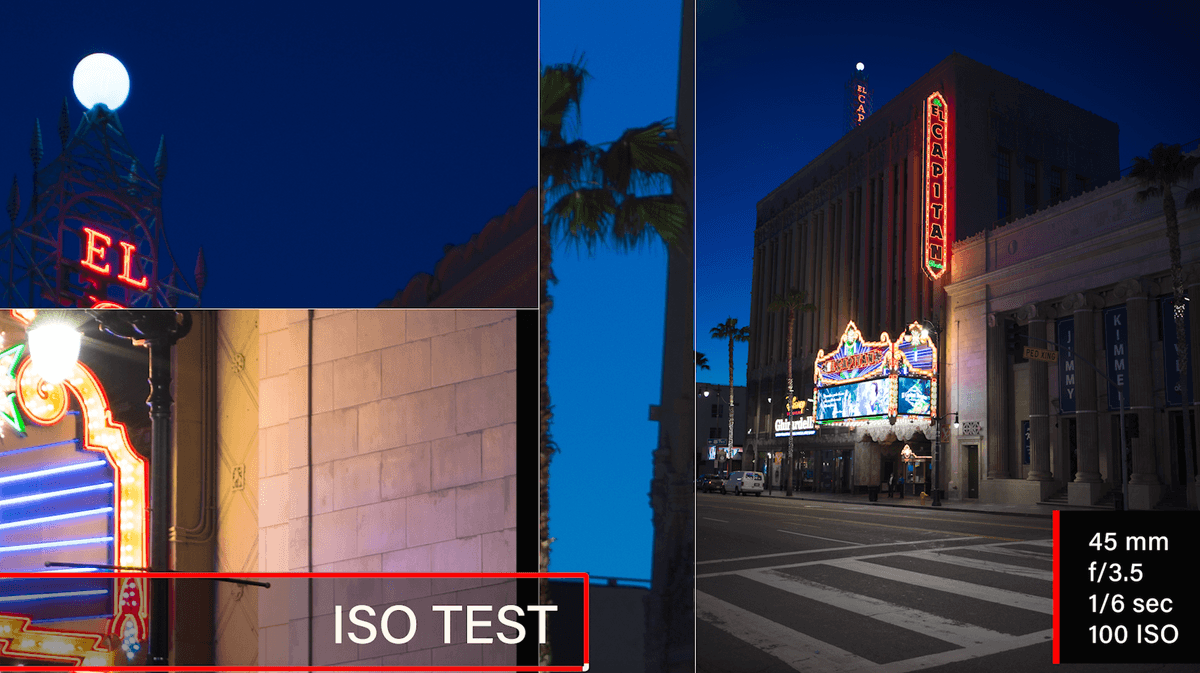
We also shot an ISO test. So let’s take a look at that. This is the same scene as the El Capitan Theater and we were shooting it at different ISOs. Starting at 100 ISO. Then we go to 200 and it should be pretty consistent throughout the rest – 800, 1600, 3200. At 3200 is when I first start to see a little bit of noise in the sky. And again, we are looking at in on an iMac screen that is maybe 15 inches tall so if you are blowing it up bigger you are going to see it more.
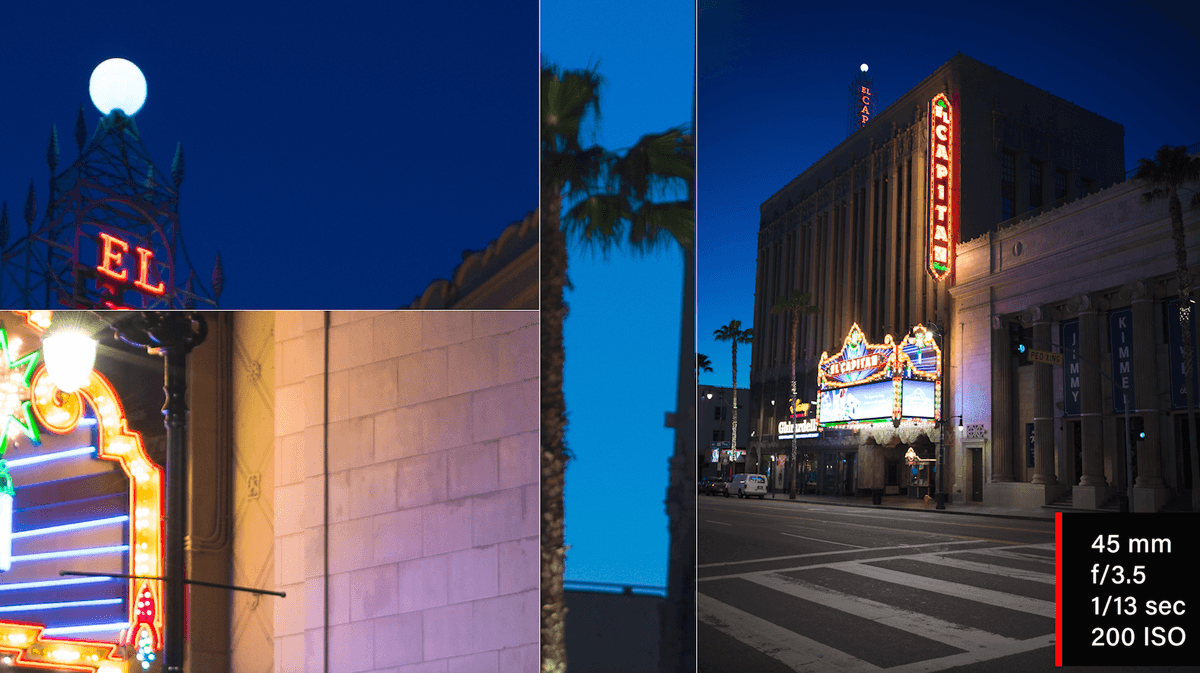
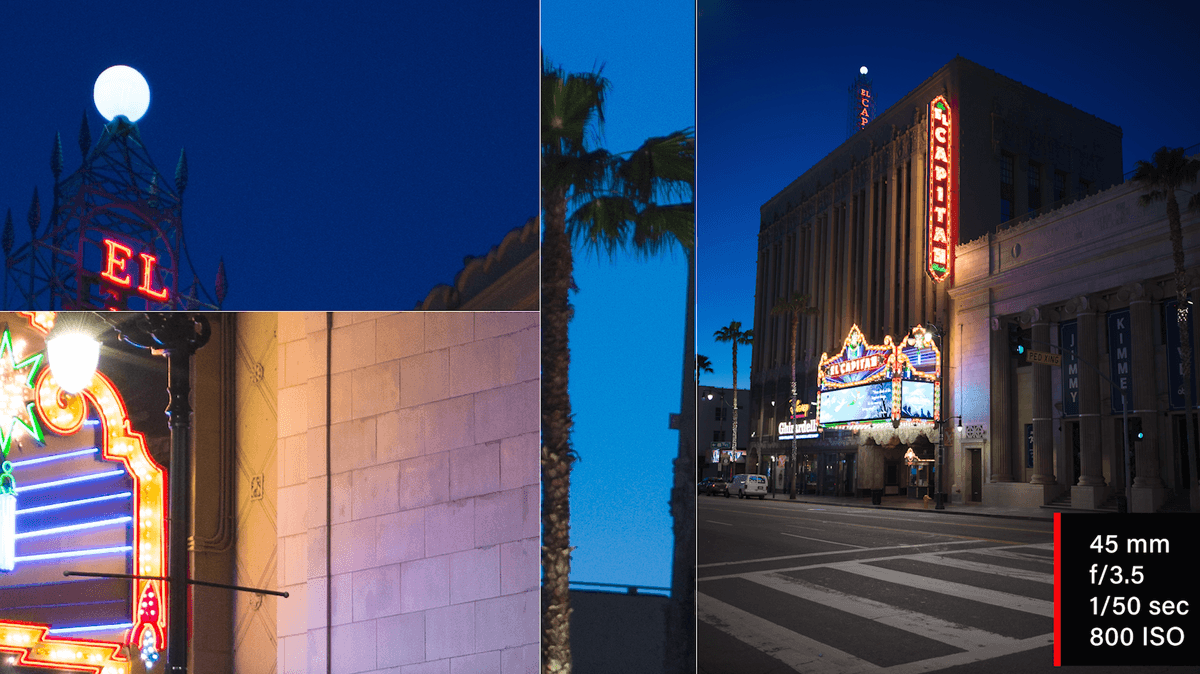
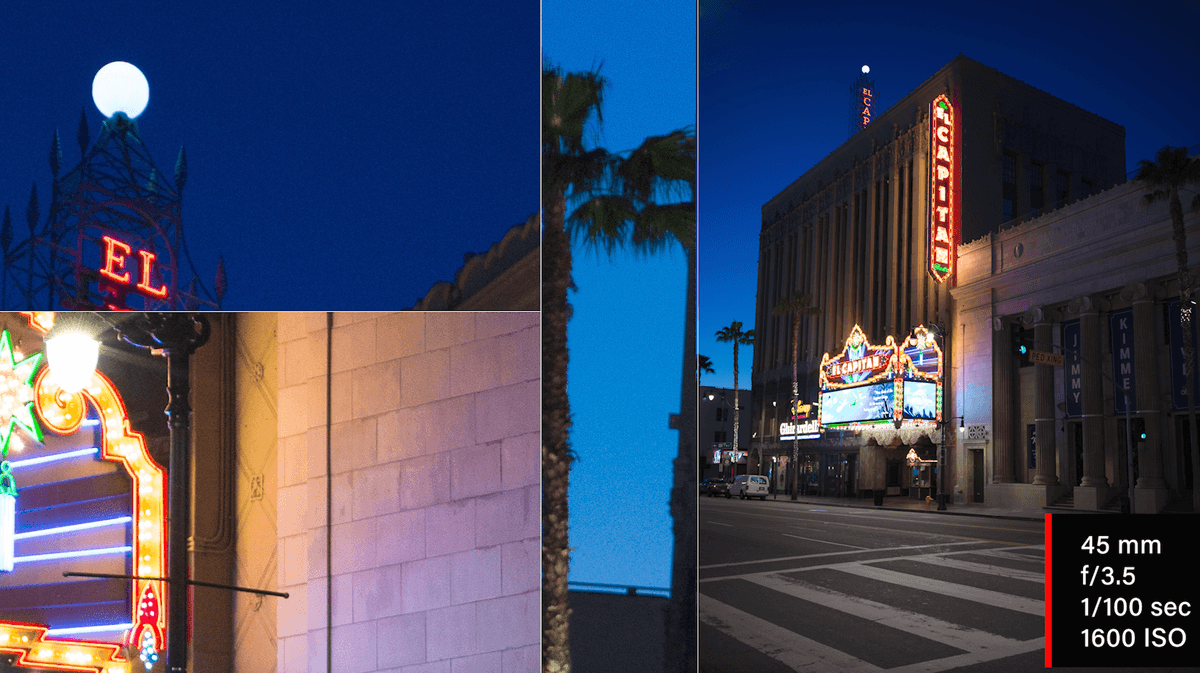
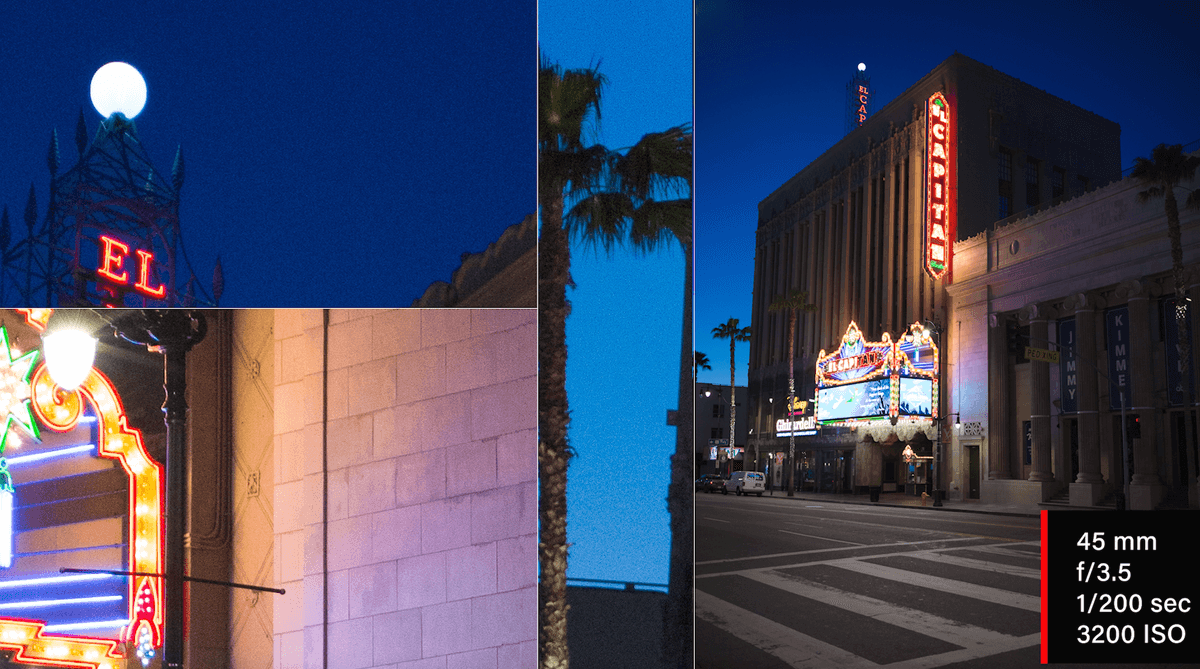
Then at 6400 you definitely start to see noise here. There is a loss of detail there. Yes, definitely, on up to 12800 ISO. There does come a point where is starts to get pretty gritty. Maybe you could print this, maybe you could noise reduce this at 12800 and use it in some way, but that is going to be much more of a look.

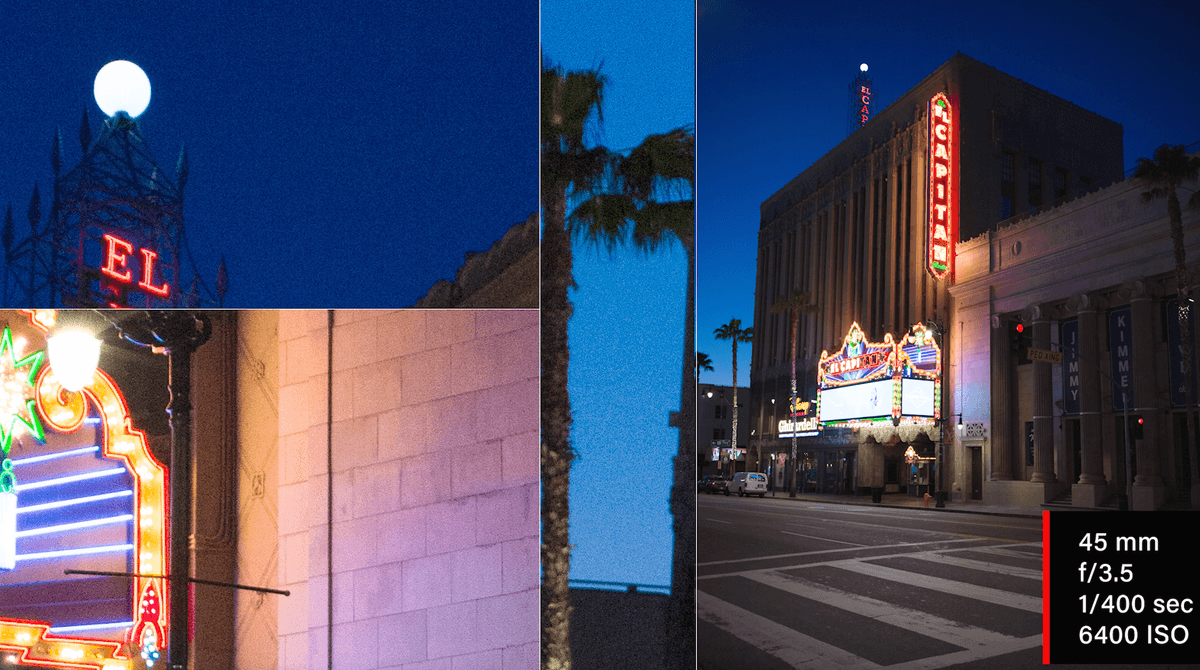
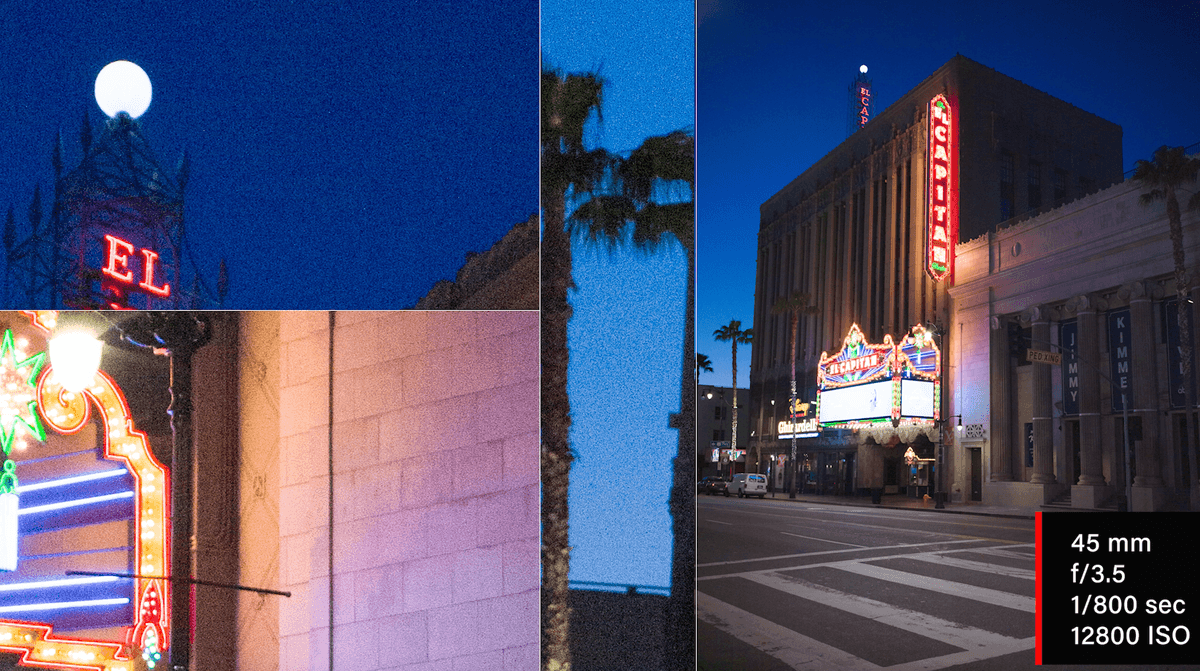
So even when you go to 25600, it was not very long ago that we would look at 25600 and say, “Well that was a waste of time to shoot.” But you look at it now and it’s pretty grainy and it has a lot of noise. But it is not like you say “Holy cow, I can’t stand that”.
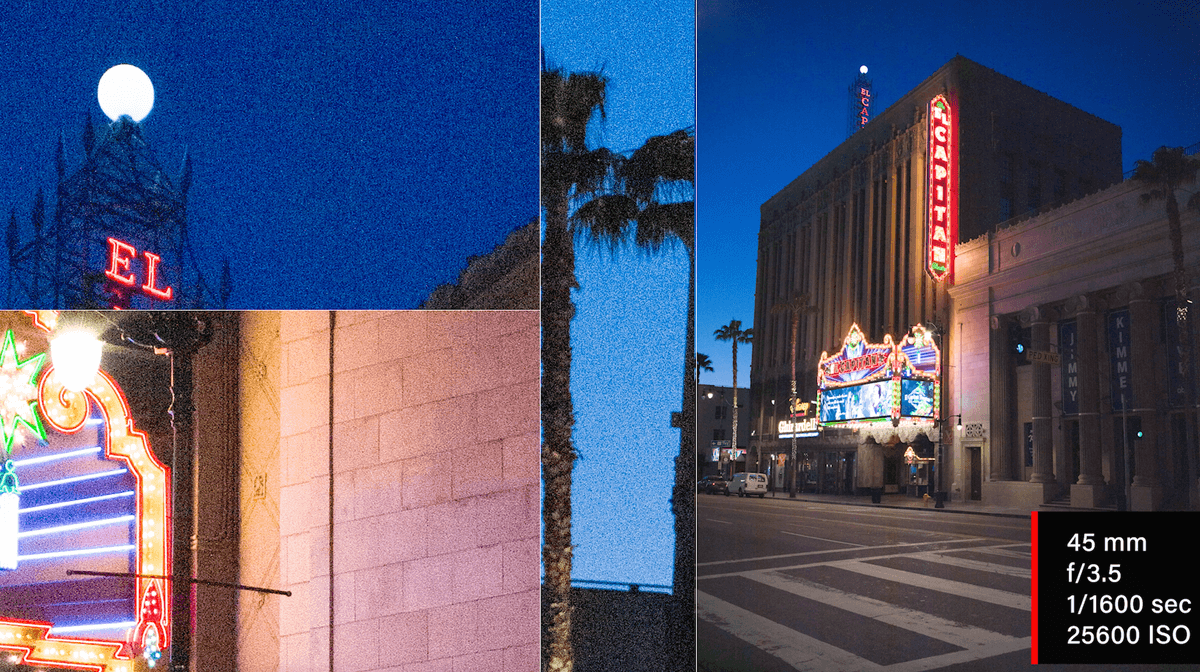
I will say the colors are consistent throughout the entire range. You don’t see the red change. There’s almost no color shift. And, this is still cleaner than a roll of 3200 ISO film I shot last year. There’s no comparison. The capability of this camera is pretty amazing when it comes to color and capturing a clean image even at high ISOs.
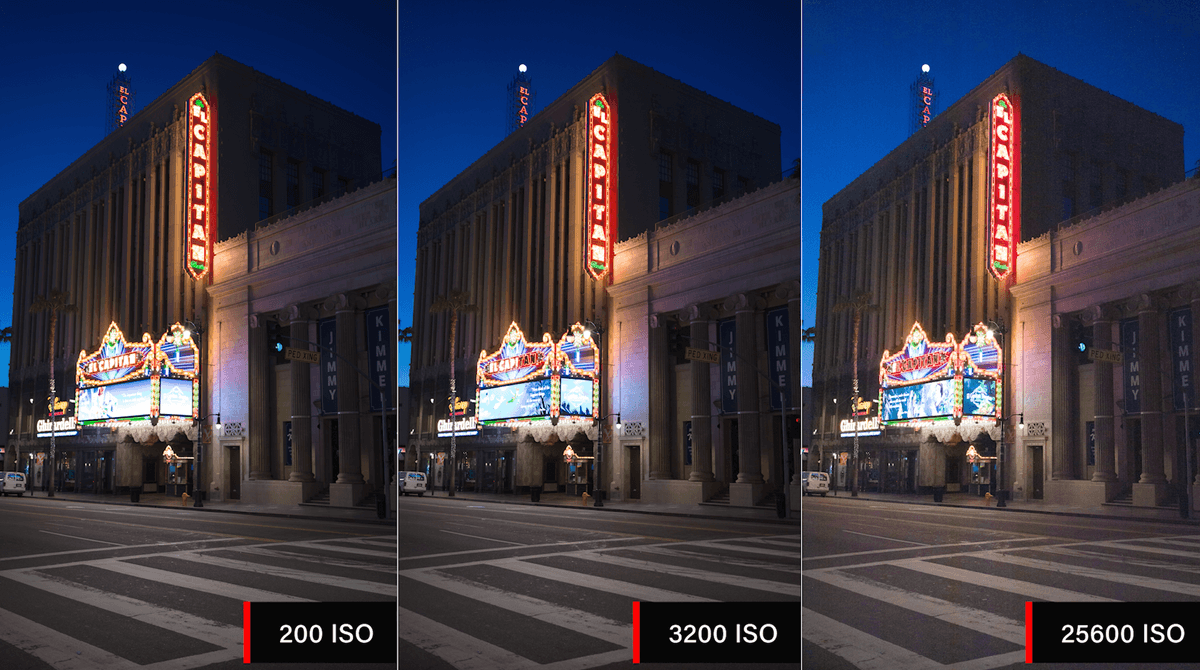
You have such a large sensor. And it allows you to capture and to render this image so much easier at that higher ISO.
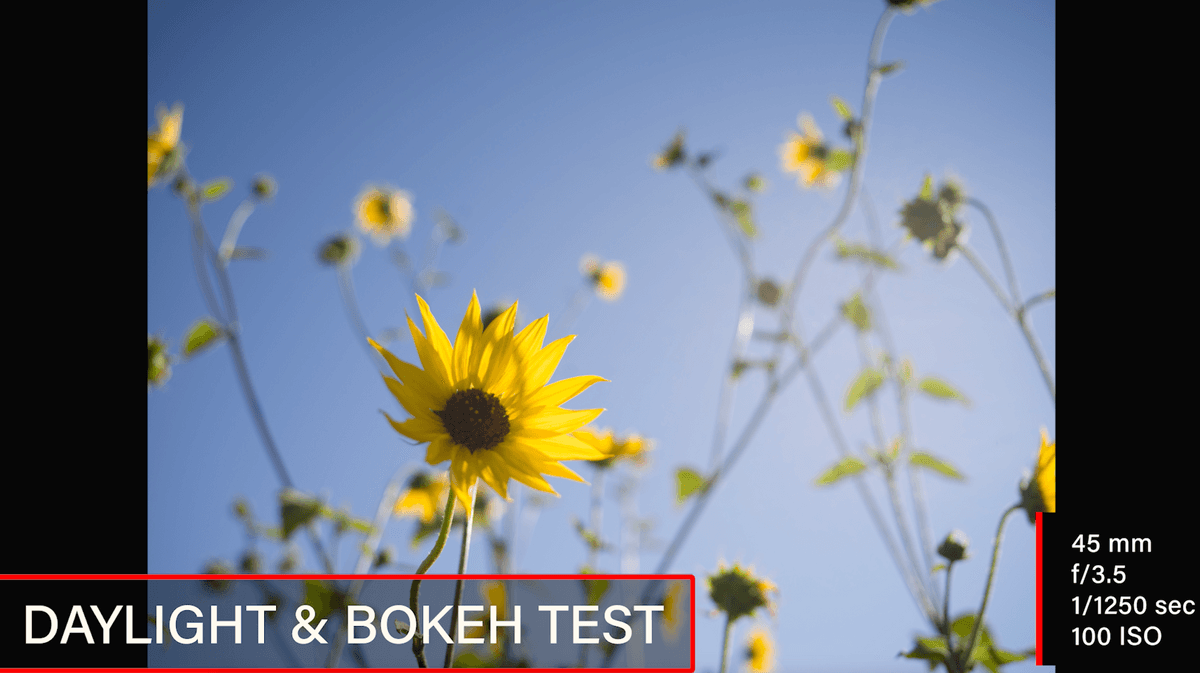
So this is more of a sun lit, middle of the day kind of image. We wanted to see how it handled, how the bokeh and out of focus falls behind it. It is a 35mm full frame equivalent lens (Hasselblad XCD 45mm f/3.5 lens)at f/3.5 wide open. So it’s not like you are going to get a huge fall off, but you do, it does fall off. It’s not like it is with a 90mm or 150mm lens.
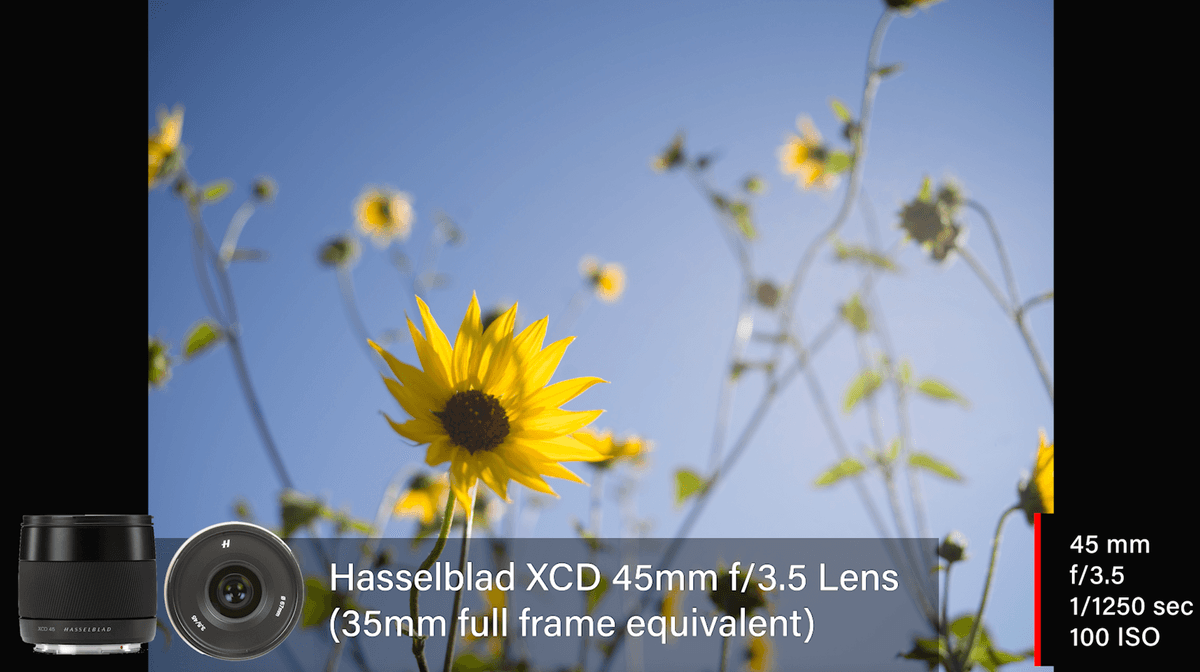
You can’t focus super close with this lens. So we couldn’t get any macro shots with this. It is 16” as the minimum focusing distance. But, still some pretty stuff.
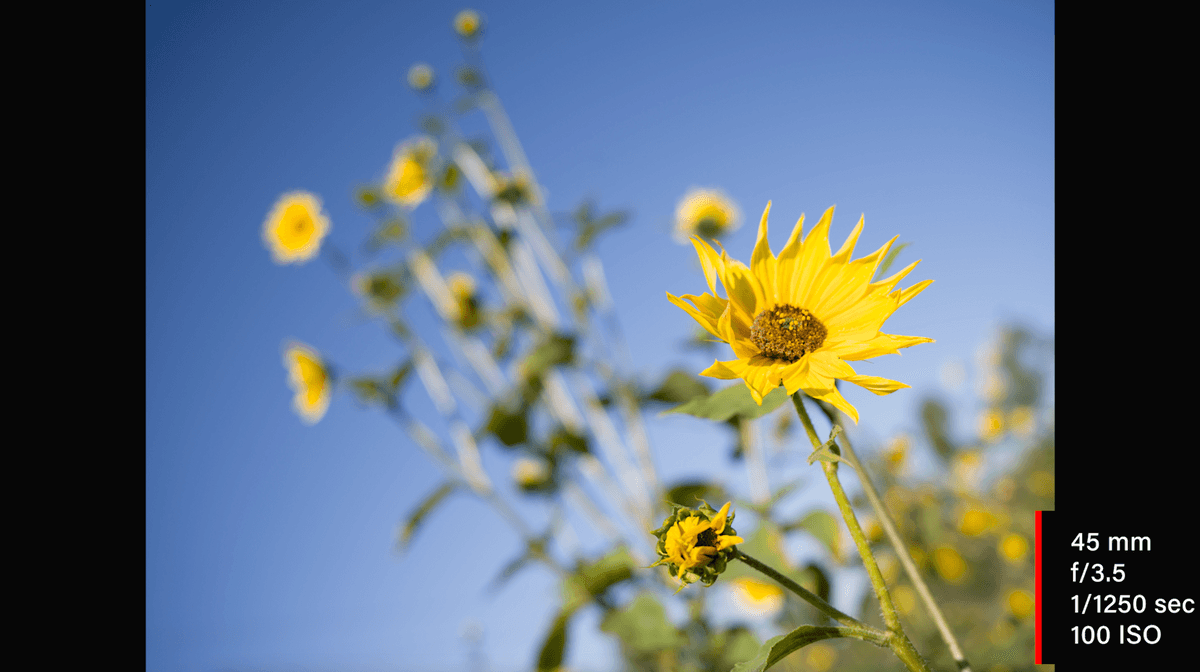
Then we got some portraits. This is just with natural light and a little fill from a bounce. It shows you a pretty good idea how it is going to hold that skin tone.
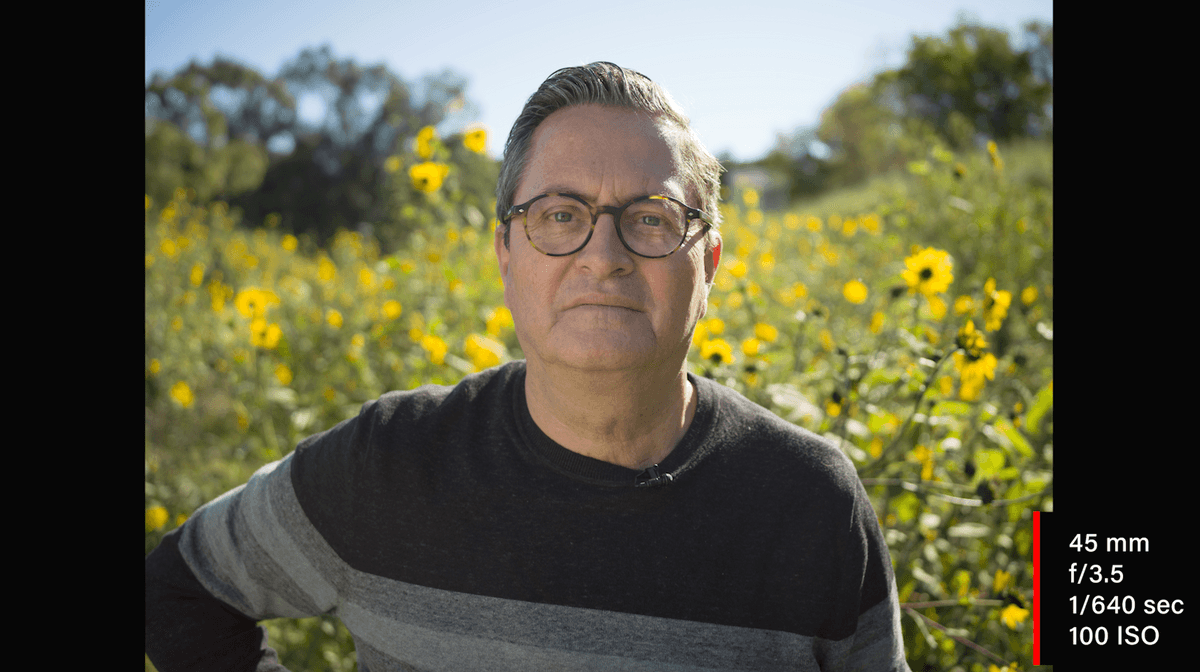
We have that really hard sunlight on the face. Look at the fall off on Kenneth’s shirt. The focus is falling off pretty fast. I love what you can see with this portrait. You are shooting on a 45mm lens that has that nice depth to it. But at the same time you have a pretty wide field of view for that 45mm. Just a unique look compared to full frame.
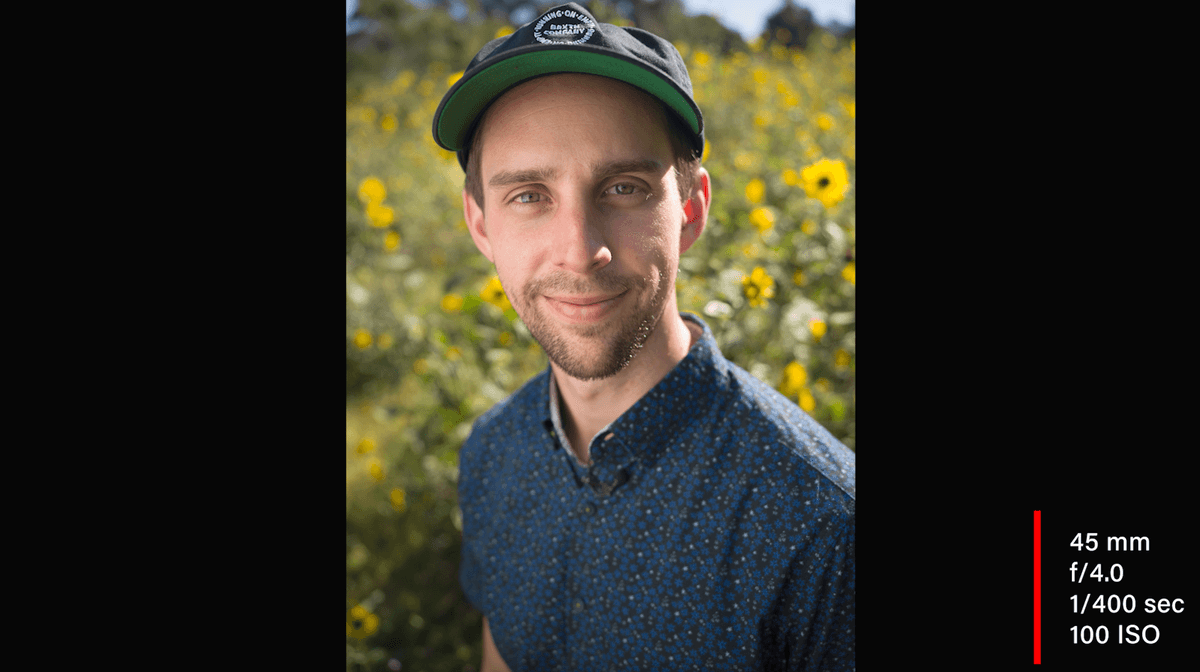
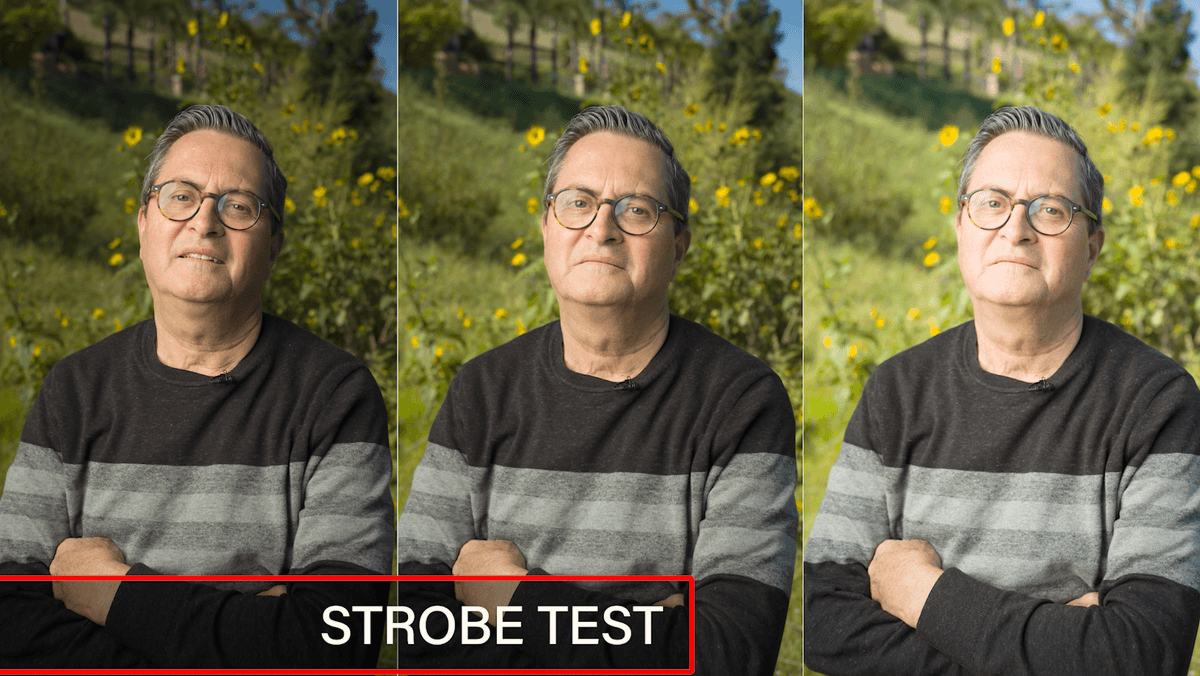
So this is one of the aspects of this camera that I absolutely love. And I have loved this with Hasselblad since I bought my 500 CM forever ago. And that is that it will sync at pretty much any shutter speed. Because it is a leaf shutter in the lens. So it is going to open and close and allow you to sync at any shutter speed. It means that you do not need high speed sync on a strobe. It allows you to go all the way to 1/2000 of a second. It can only go to 1/2000. It doesn’t go to 1/4000, so there is a limitation there. But you go to 1/2000 of a second and you can sync your strobe without any problem at any aperture.
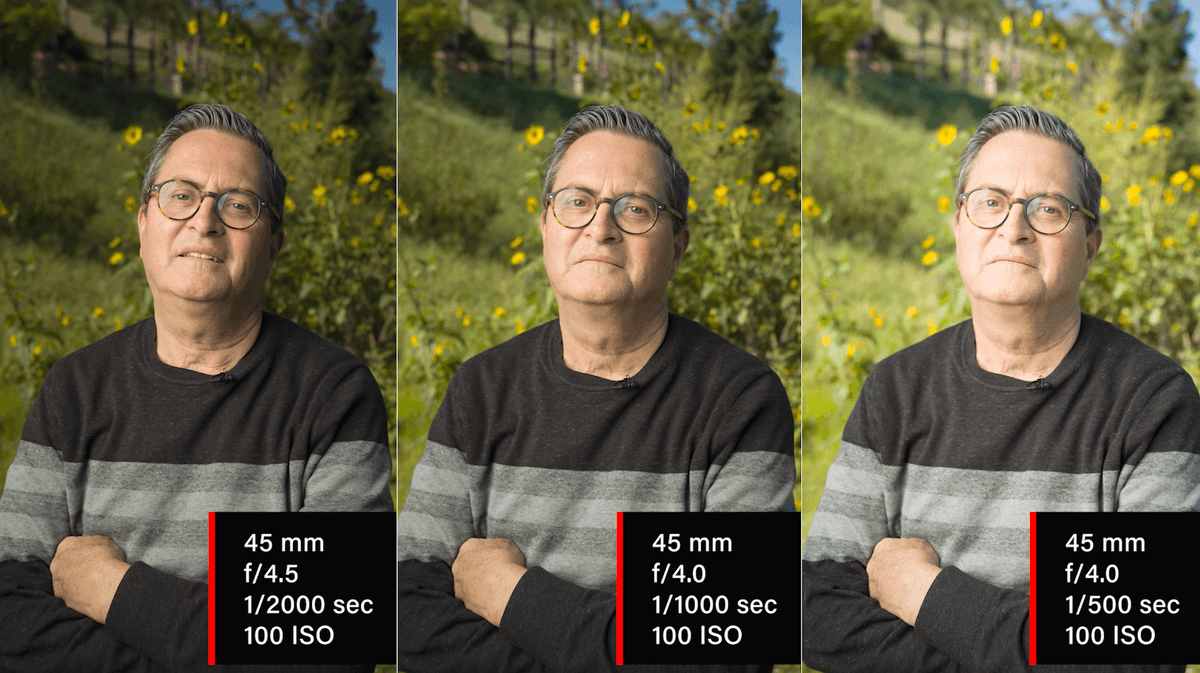
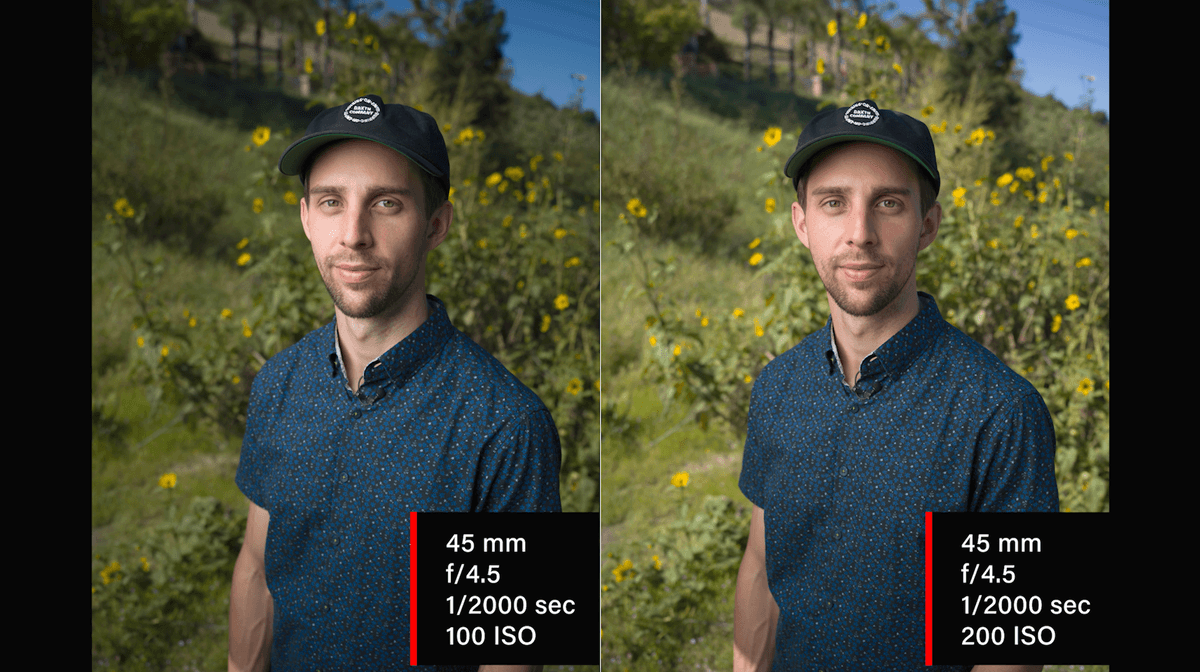
I also found at that the FJ400 from Westcott will sync with the trigger with the Hasselblad. It is not one of the cameras you can choose in the menu. But I just selected one of them and it synced just fine. So with the Westcott Strobes, the FJ400 which I love for a strobe set-up, this synced with their trigger and worked flawlessly.
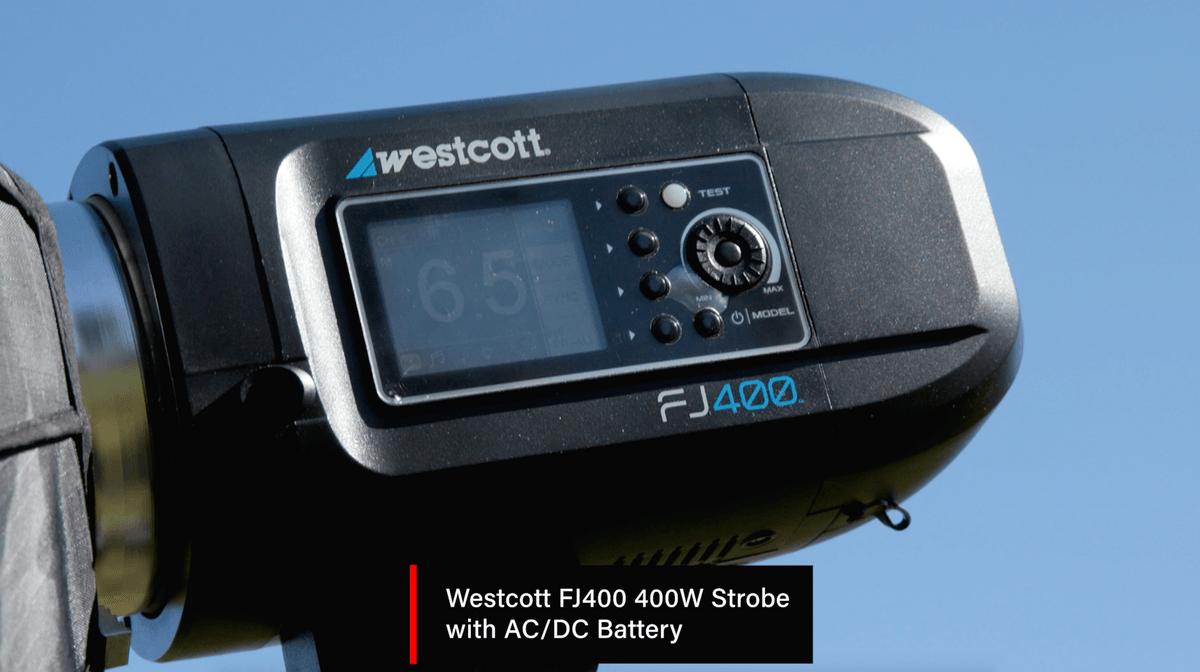
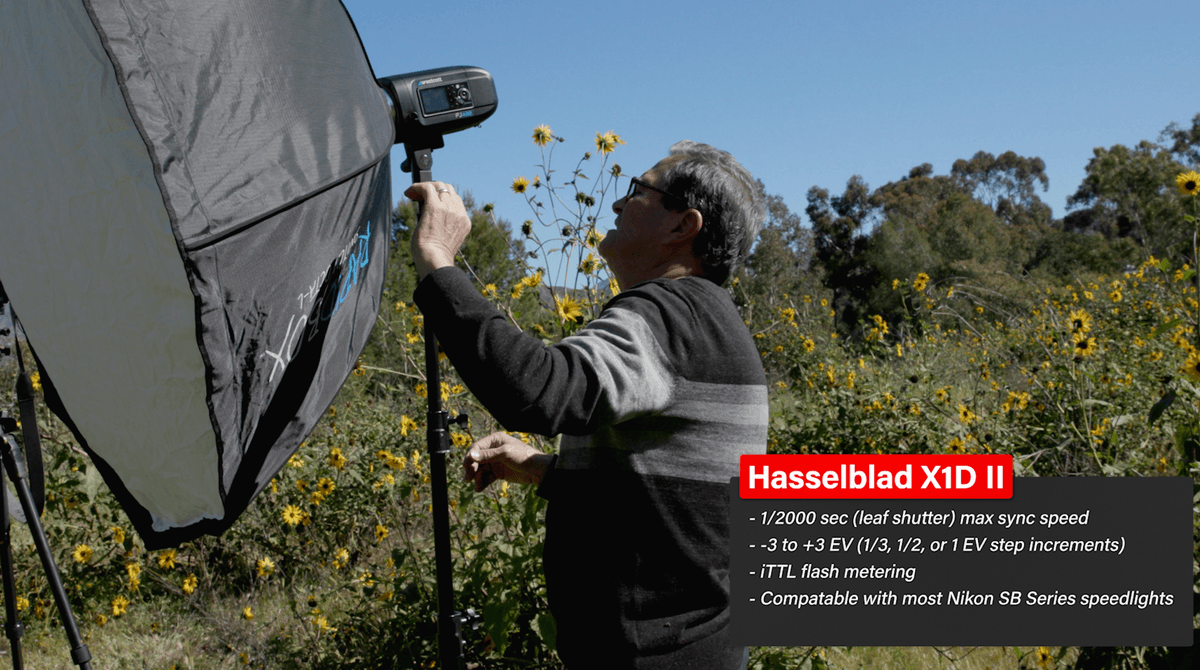
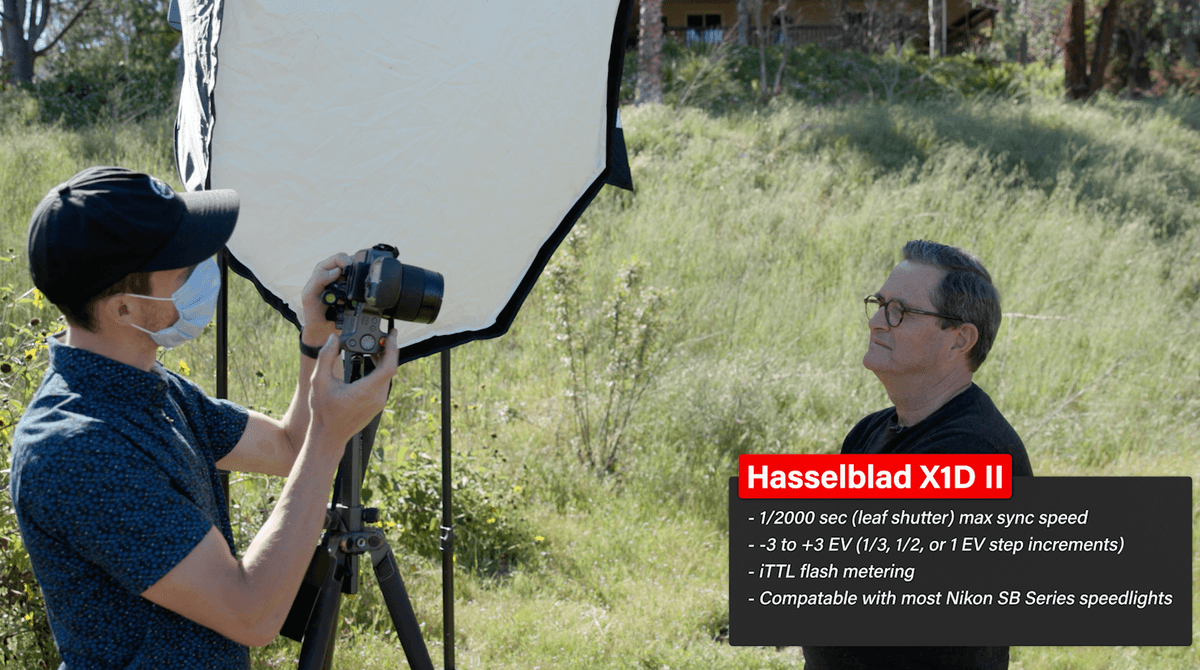
So we did our dynamic range test a little differently this time. I am sitting inside and the exposure inside is 7 stops darker than it is outside.
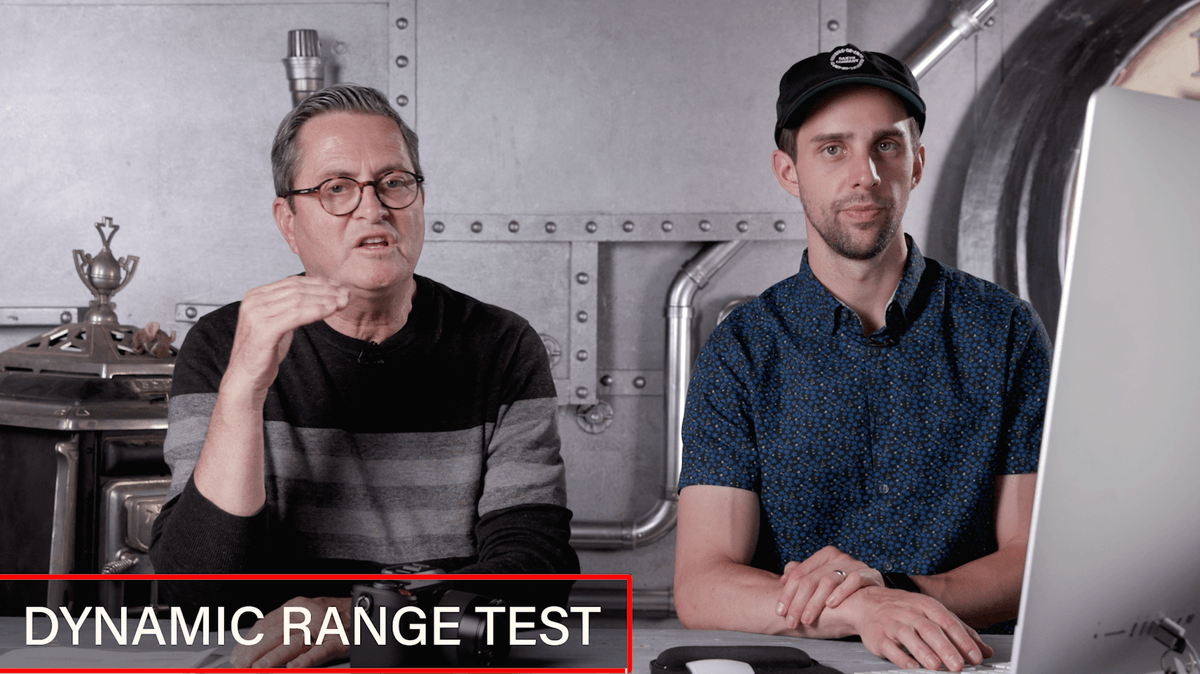
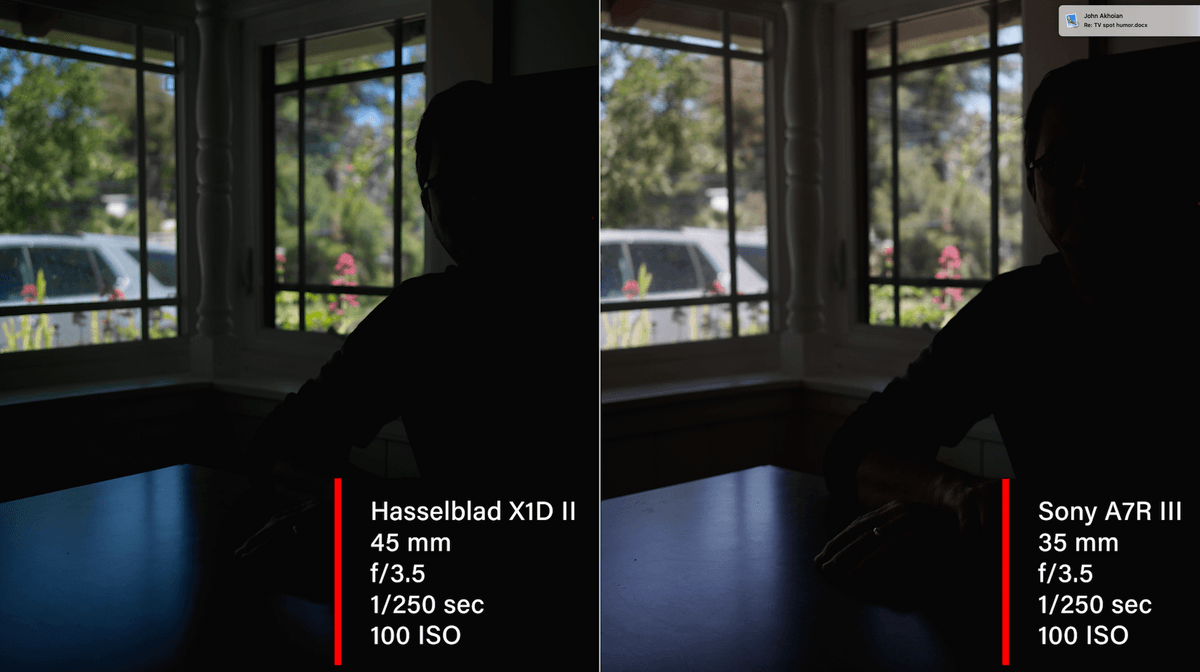
And you can see real fast, this is the uncorrected image where it’s just a black silhouette. All you are seeing is through the window. Then we brought the shadows back up and here it is.
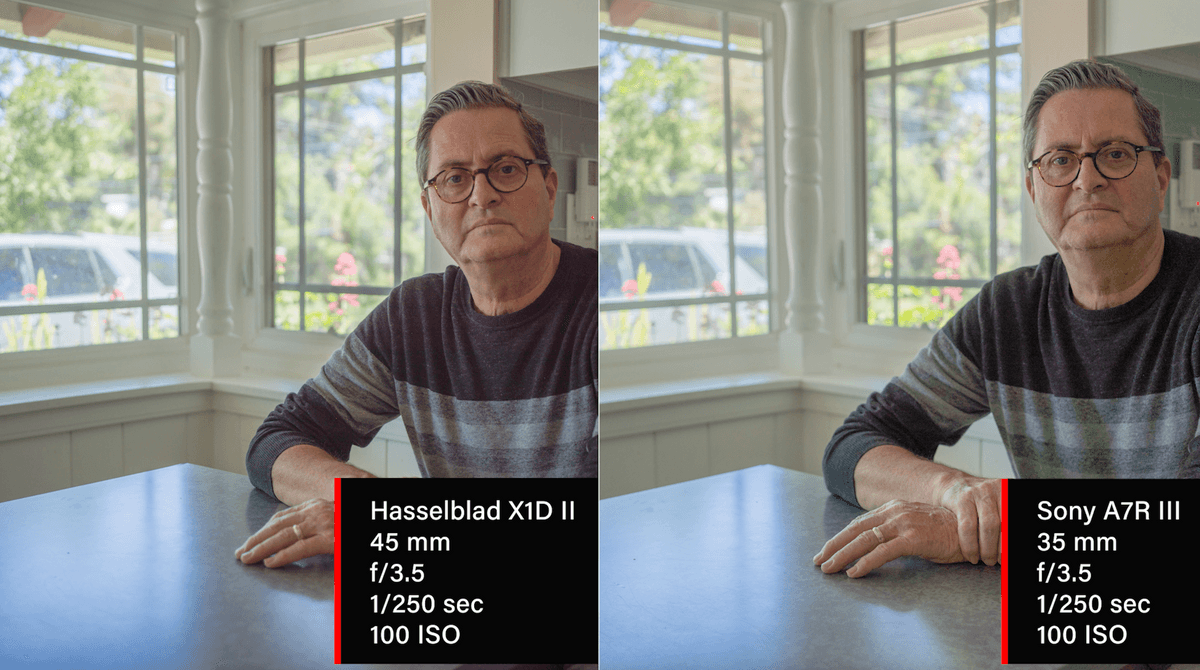
There is some banding in his sweater. A little splotchy-ness in both cameras. The Sony is a lot more green. It is pulling out all these green patterns. Neither camera is doing great. And I would have to say the Hasselblad feels more magenta. It is pushed very magenta where the Sony is pushed very green.
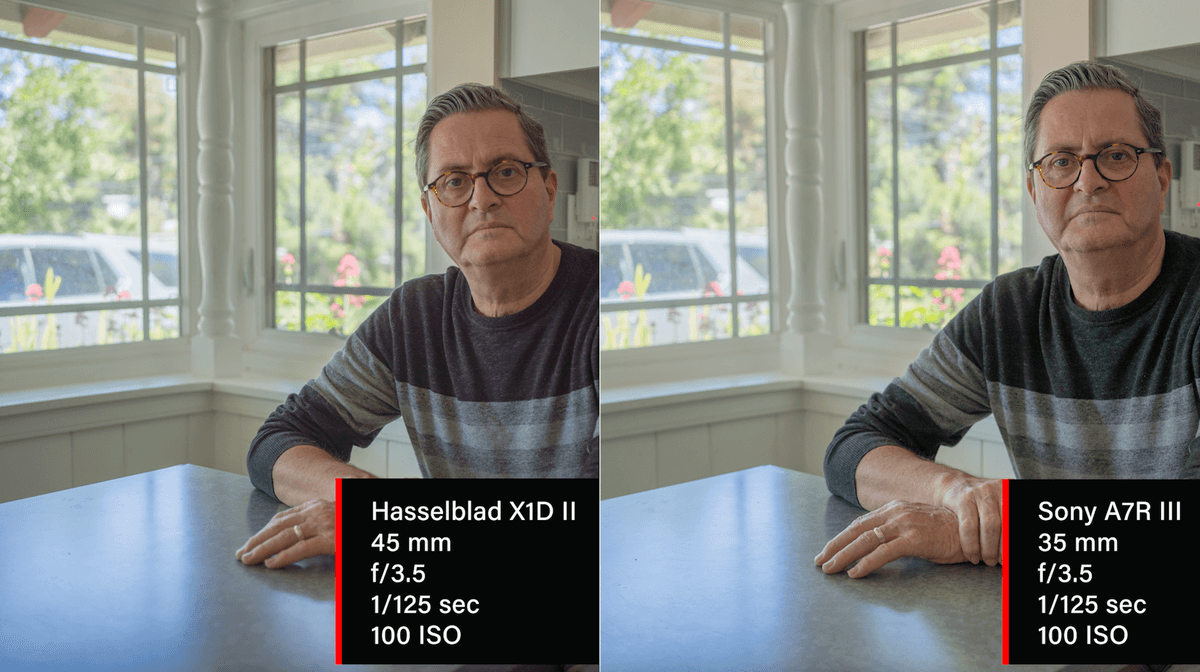
But we move into one stop brighter than that so we are not struggling so much in the shadows. And already it is looking pretty nice.
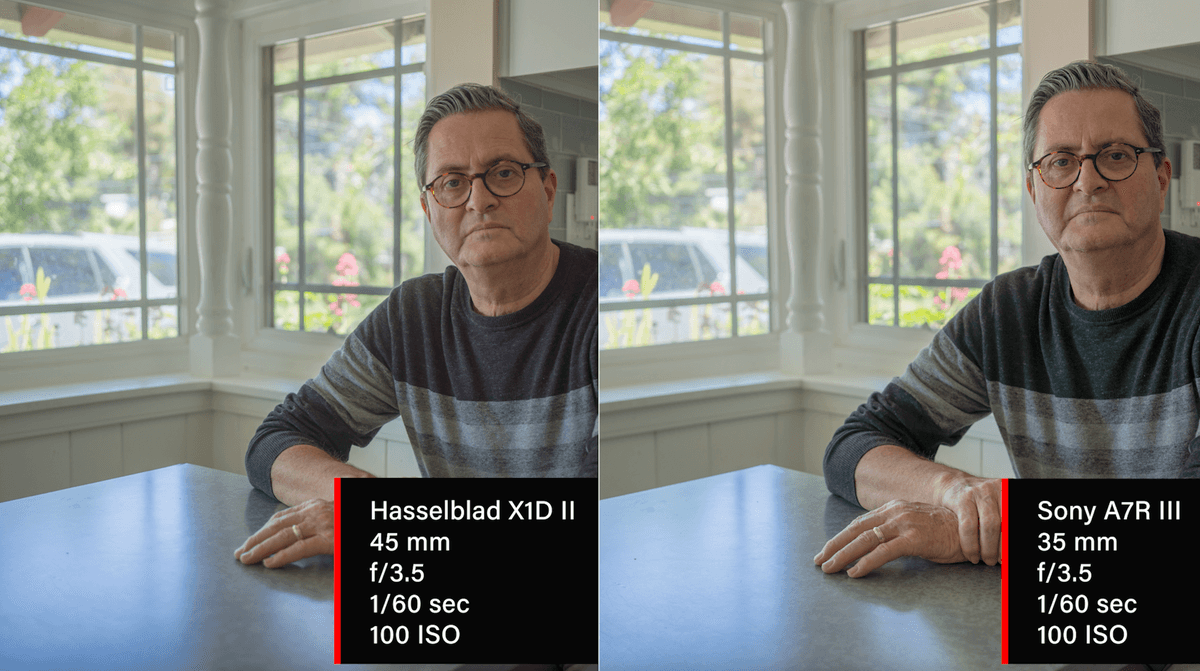
Now at this point we have move the exposure more towards the shadows by a stop. And if we go to another stop it’s looking very good. And we are still holding the outside. The dynamic range is really good on the Hasselblad because it is holding all of the information in the highlights outside. And the shadows are preserving this beautiful color and tonality. And you don’t have as many noise or color problems as you did in the earlier exposures.
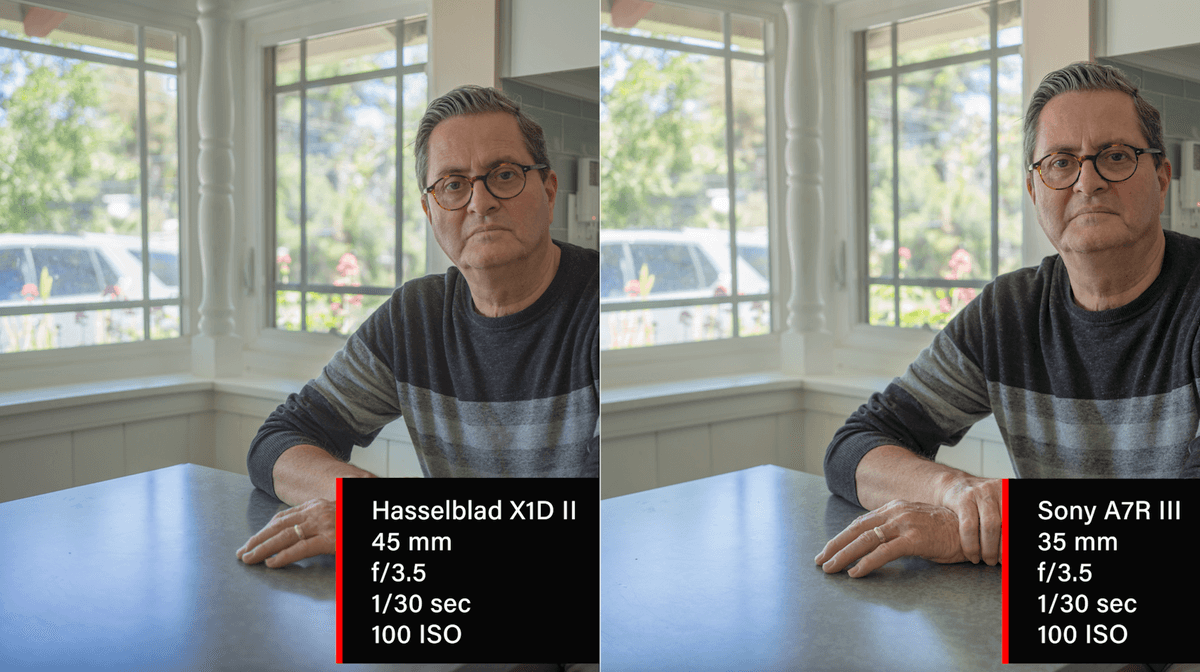
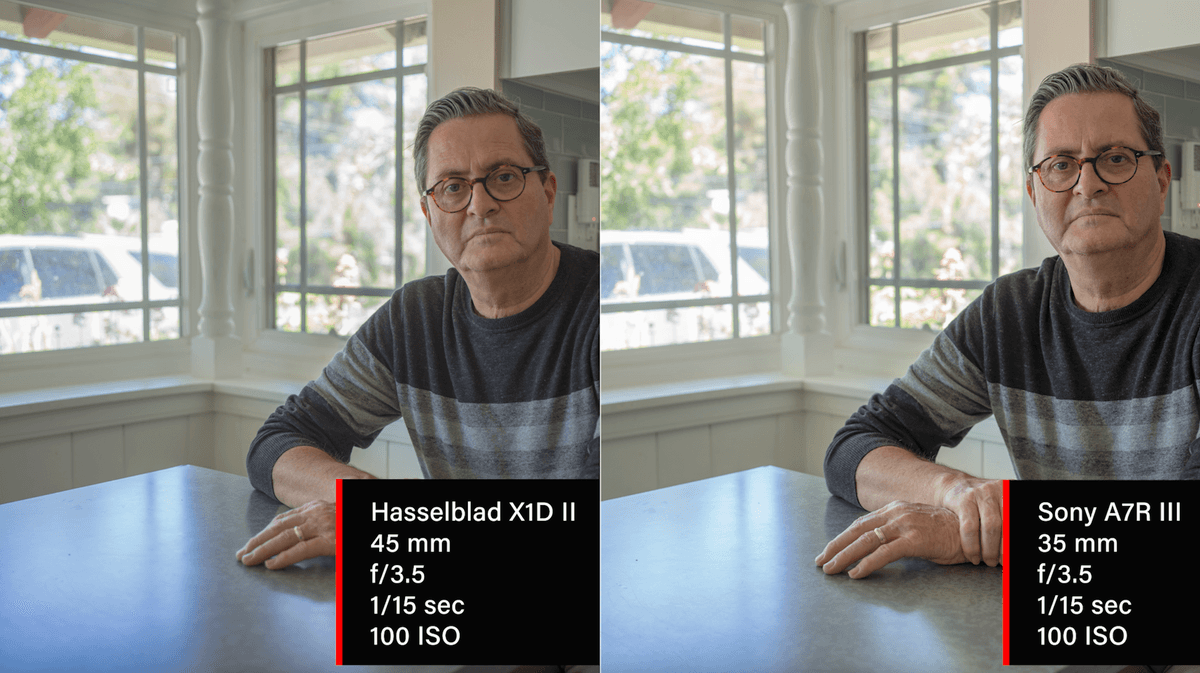
If you look at the table, the blue on the table in the Hasselblad is a lot more pronounced than it is on the Sony. And then the magenta in Jay P’s face, there is a lot more separation in the colors in the image. It is pretty subtle, but that is the difference that you get from a 16 bit RAW file compared to a 14 bit RAW file with the Sony. And then with the larger sensor there are a lot of things going for the Hasselblad.
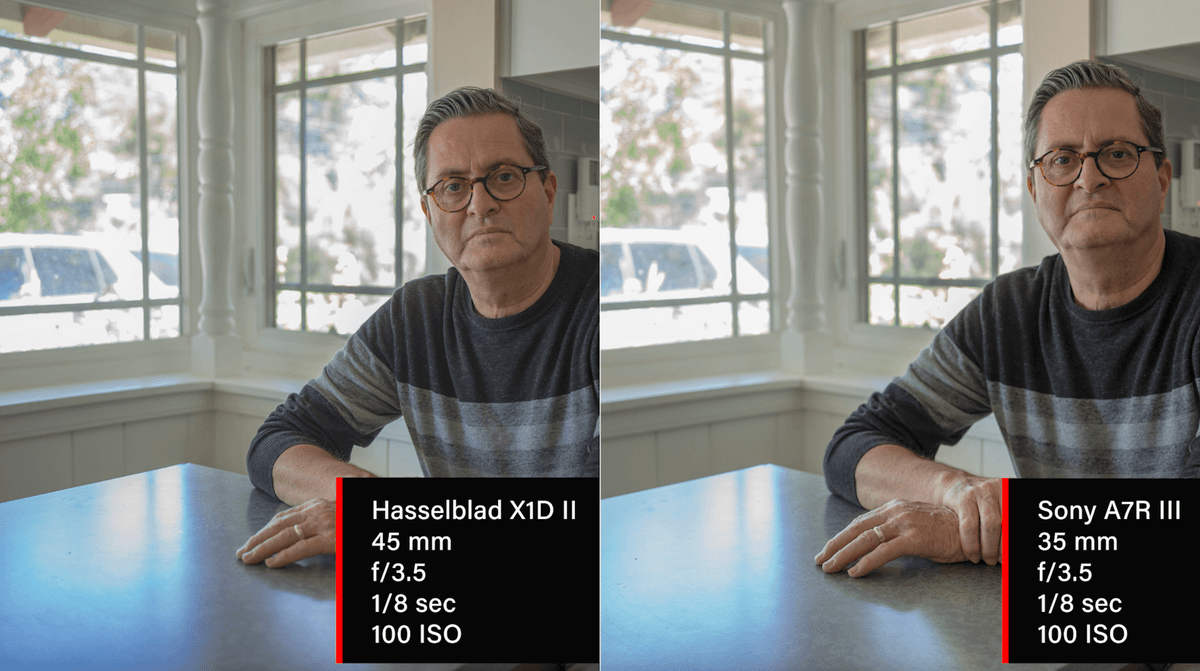
Right here we are 3 stops over exposed for the outside. And we are starting to lose the highlights of the car. Especially with the Sony. The Sony is not holding it as well. Overall I feel like the tonality of the Hasselblad is smoother. But they are both doing really well.
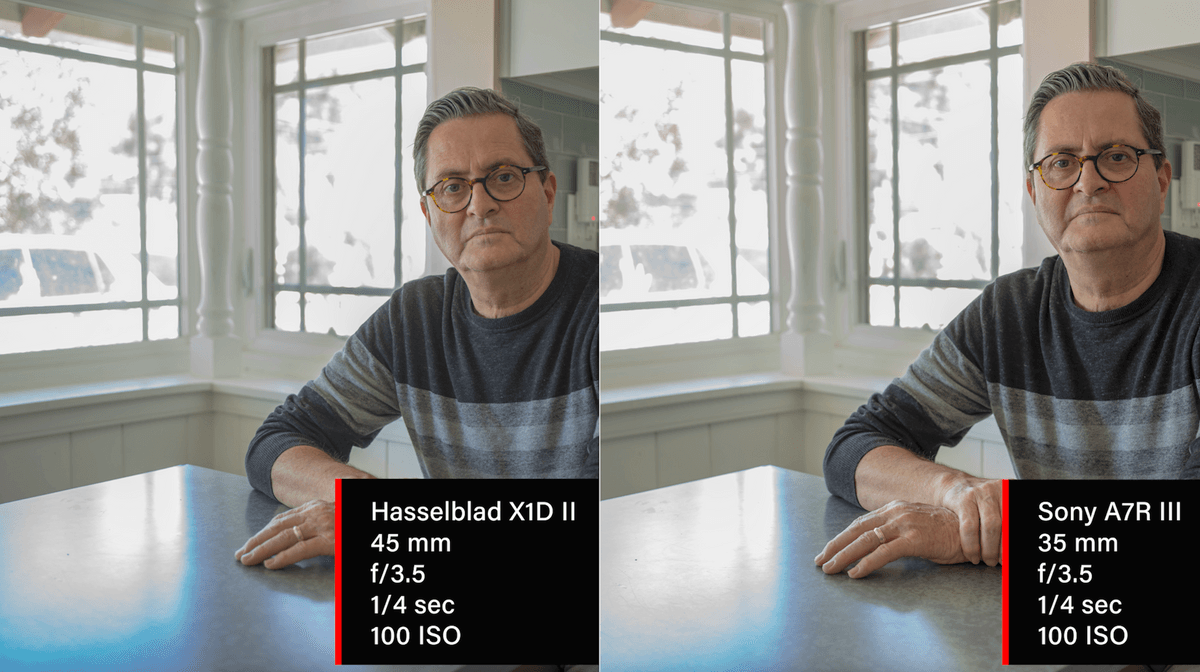
Here we are 4 stops over. Both cameras are starting to clip on the outside. It’s not holding as much information. And 5 stops over the outside is looking really bad. I think it clips a little quicker on the Sony than it does with the Hasselblad. Only by about of a half of a stop though.
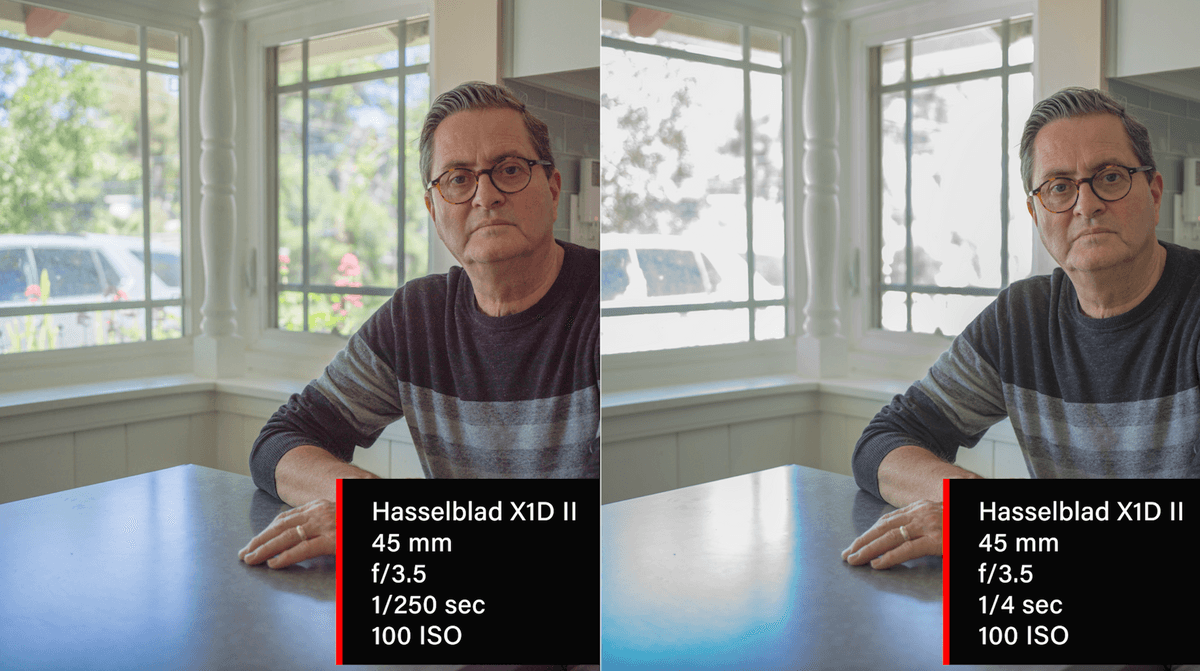
Here is exposed for the inside. Jay P looks great. It points to one thing. That is that you cannot overexpose your highlights in digital photography. You have to retain the highlights. You are better off to underexpose by a stop and sometimes even two stops to be able to maintain the highlights. Then you can bring back the shadows in post. I’m not saying as a general rule, but if you are in a dark silhouette situation and you want to be able to bring detail into the foreground, you will have to underexpose the background.
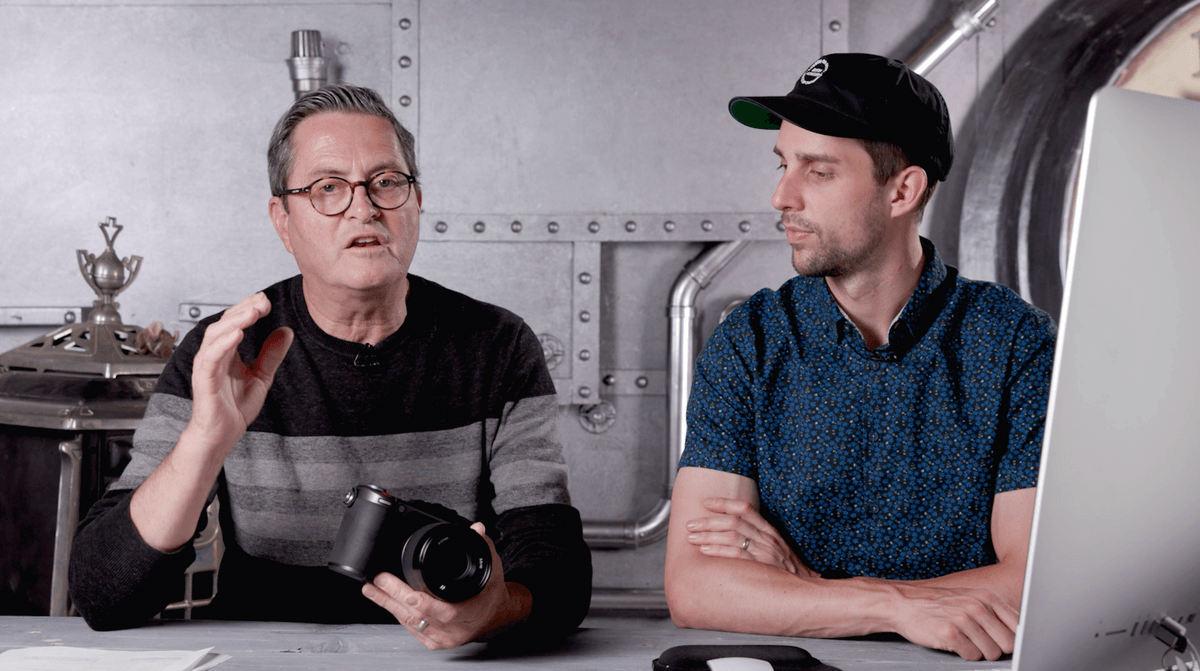
So there is a look at some great images. How did you feel Kenneth? We talked about all the specs up front. We used it. We did talk about the one that that was a little difficult. I love using autofocus and autofocus points. I want to be able to move that point around. You have to reach all the way over to this button.
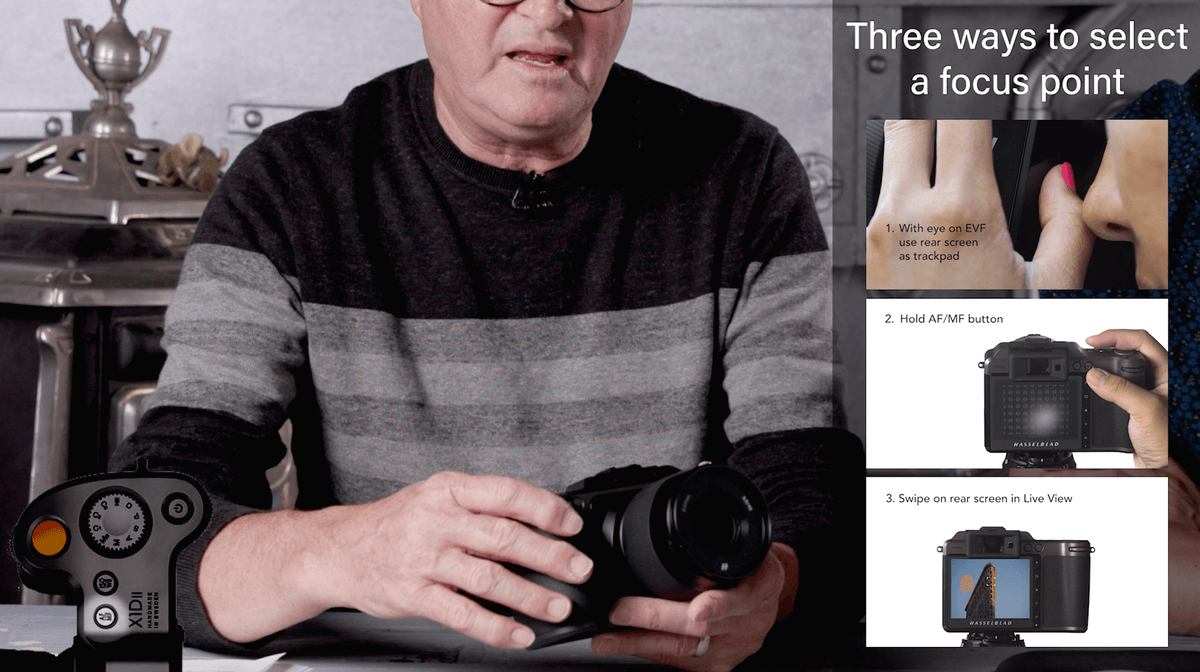
You can use the touch screen on the back to adjust your focus point. But I don’t like having to pull away from the camera and I am not quite framed right and then hit the button. I just with the focus button wasn’t such a reach because you will be using that all of the time. That is the button you will you here next to the exposure button the most. It is all the way over and you have to hold it down for one second which is a little bothersome.
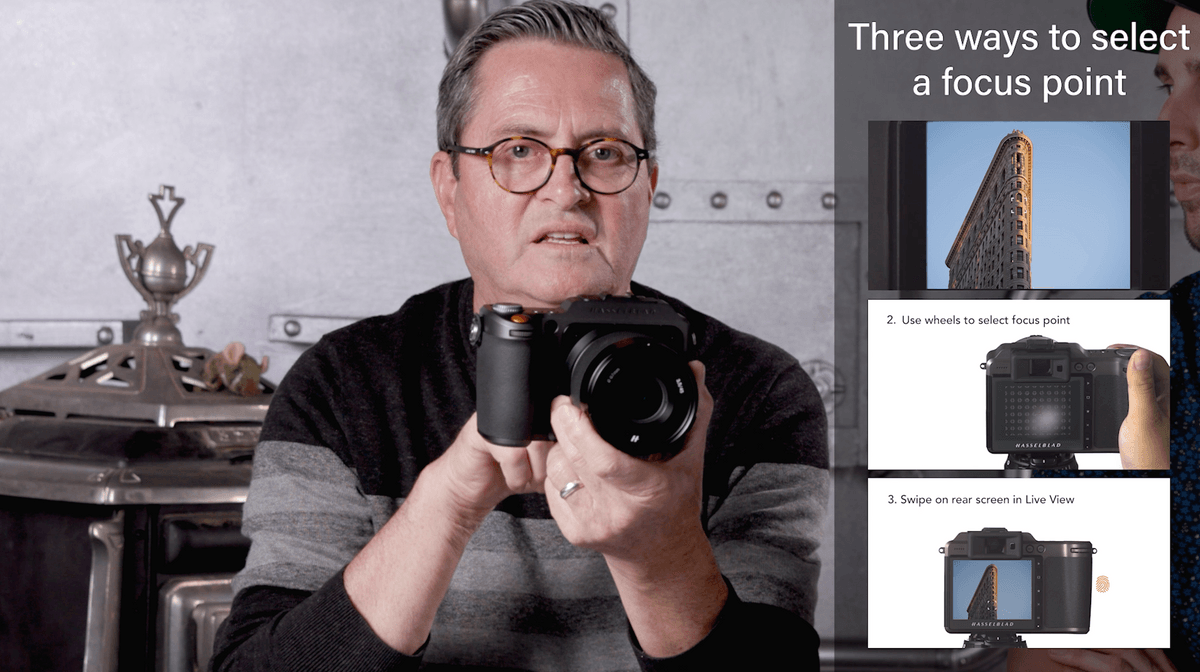
It is a really sleek body. I do wish there were a couple more buttons and I wish the buttons were more clearly marked. I felt like, granted I could have read through the manual and figured it all out. But picking up the camera and looking at the back I didn’t really understand what half of the buttons were supposed to do. And even after shooting it for half a day I didn’t have a great grasp on how to access things on the menu quickly.
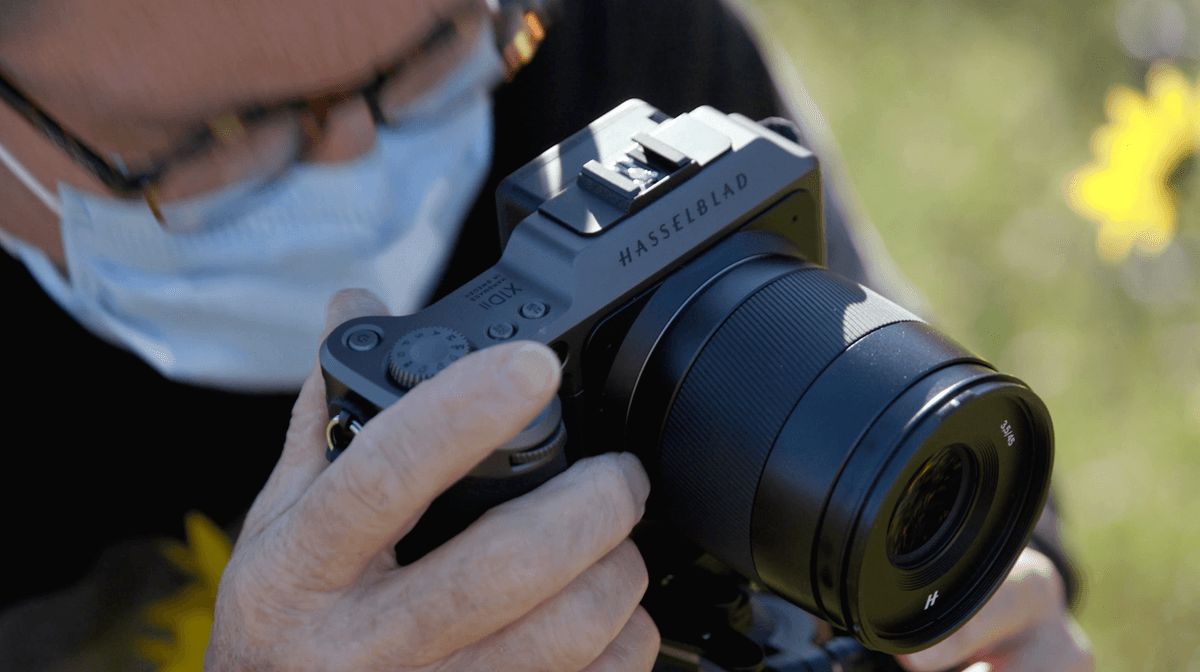
The touch screen menu is awesome. You can add icons to the back so you can customize it a lot. It is very useful, but at the end of the day, my personal workflow is that I prefer buttons.
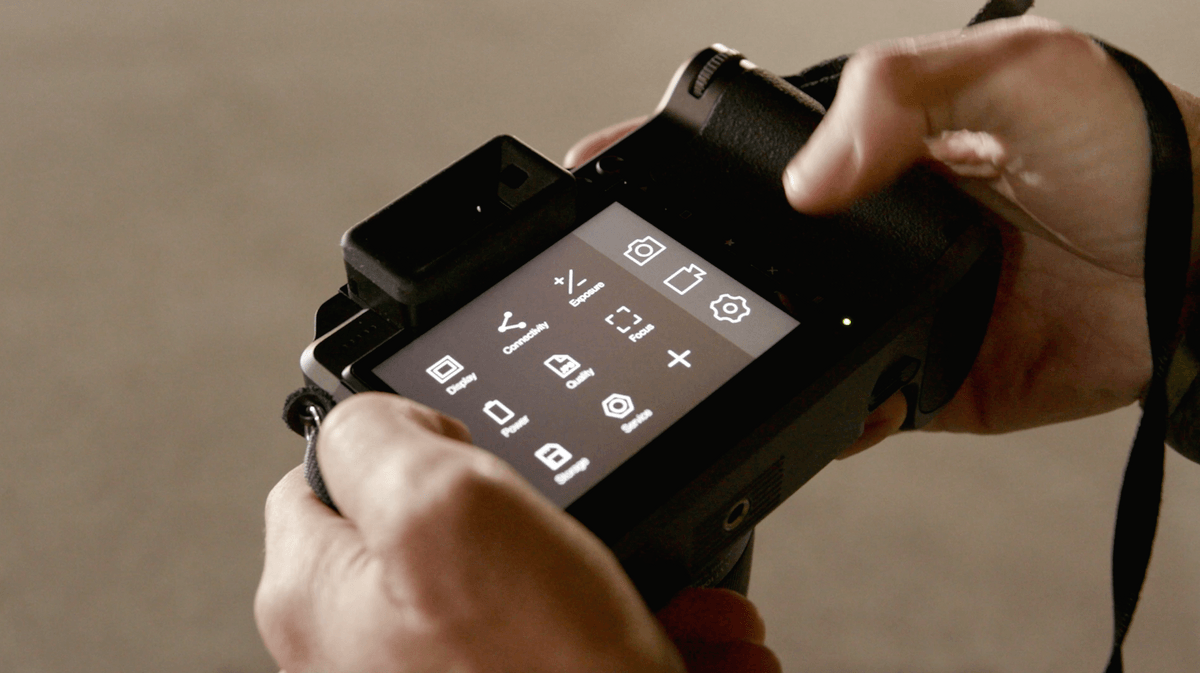
It is interesting though, one thing I found kind of appealing was that you didn’t have so many things in the menu. It wasn’t miles and miles deep. It was a quick get to this, find that. I thought after just using it for a couple of days I think it would be pretty intuitive and I think you would be fine.
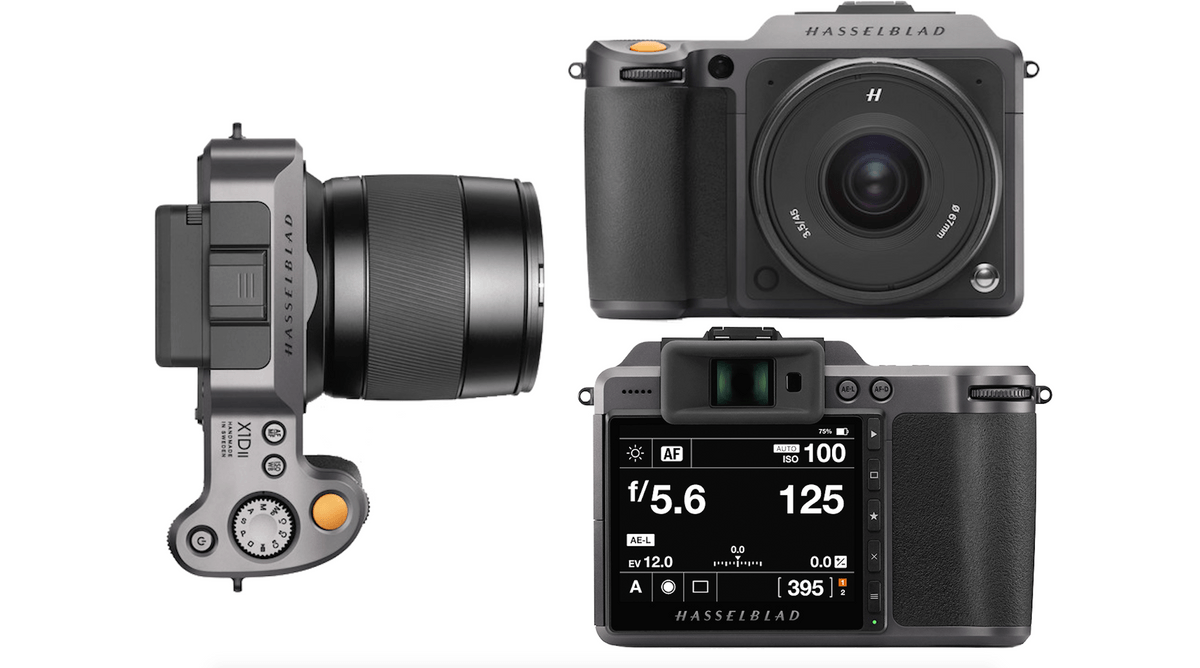
Again, this is more for a slower workflow. It is not a run and gun street photography, sports, fast stuff. Although I think you could do some street photography with this that would be kind of fun.
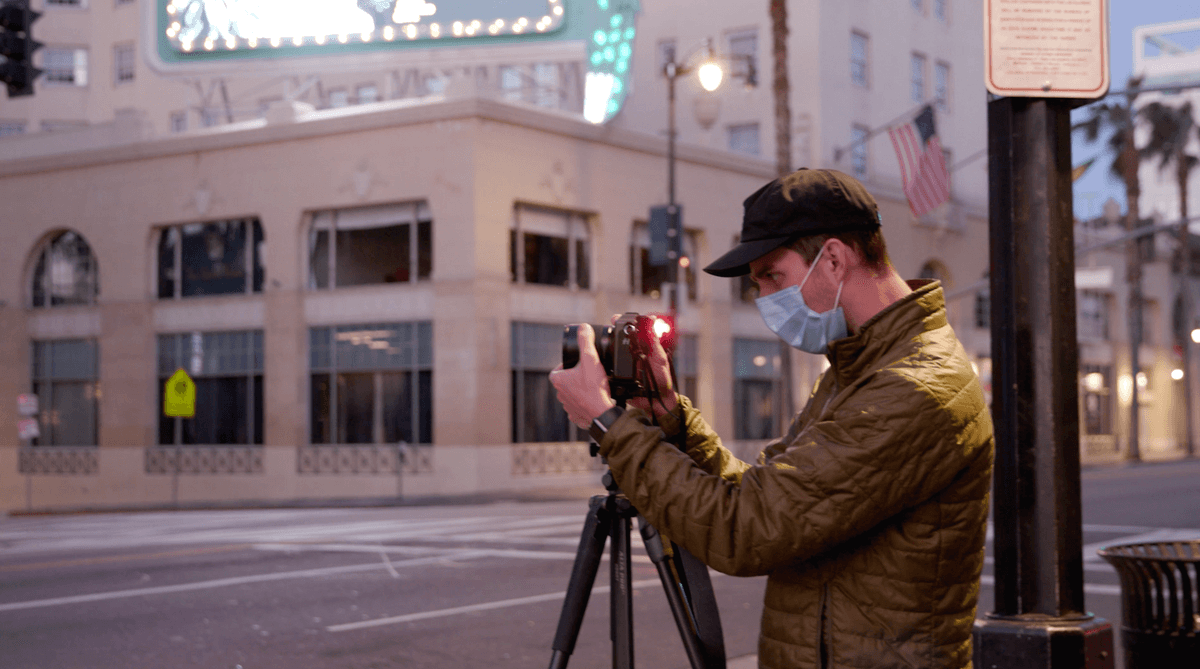
It is small and compact. It has a great grip so you can hold onto it. It is very comfortable in my hand. I don’t feel nervous about dropping it.
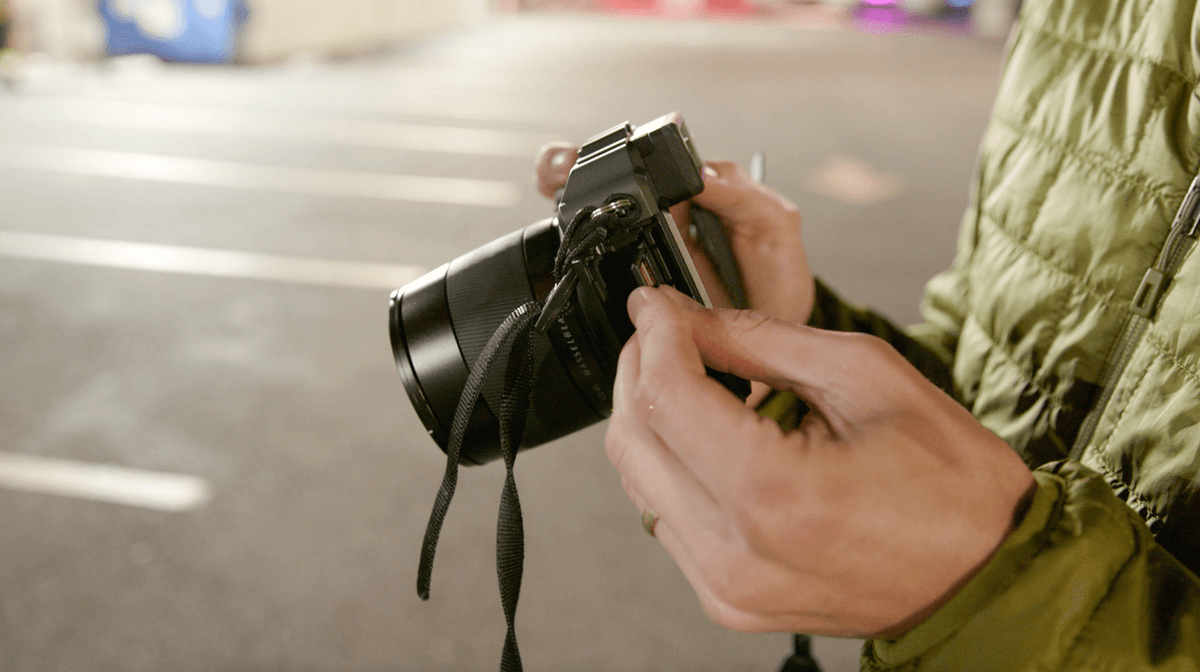
It is a different kind of camera than you are probably used to if you are shooting Sony, Nikon or Canon. But, I have to say after looking at the images it is hard to turn down the imagery. You almost feel like you can put up with the quirks to get such great images. And if you are shooting a landscape you are not trying to shoot multiple frames per second.
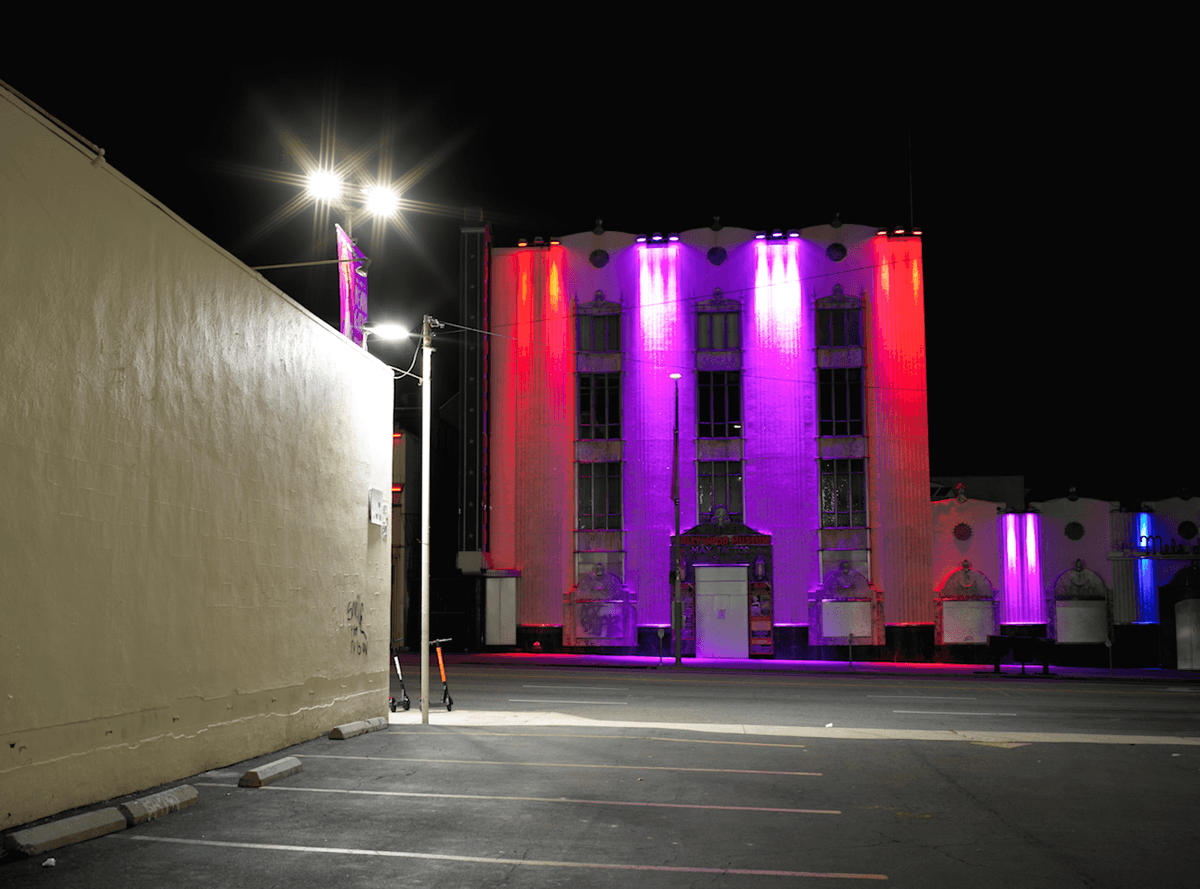
With the strobes you can shoot multiple frames a second where we were using the Westcott FJ400 and dialing them down a little bit. It was firing and you could just keep shooting. It was nice that way.
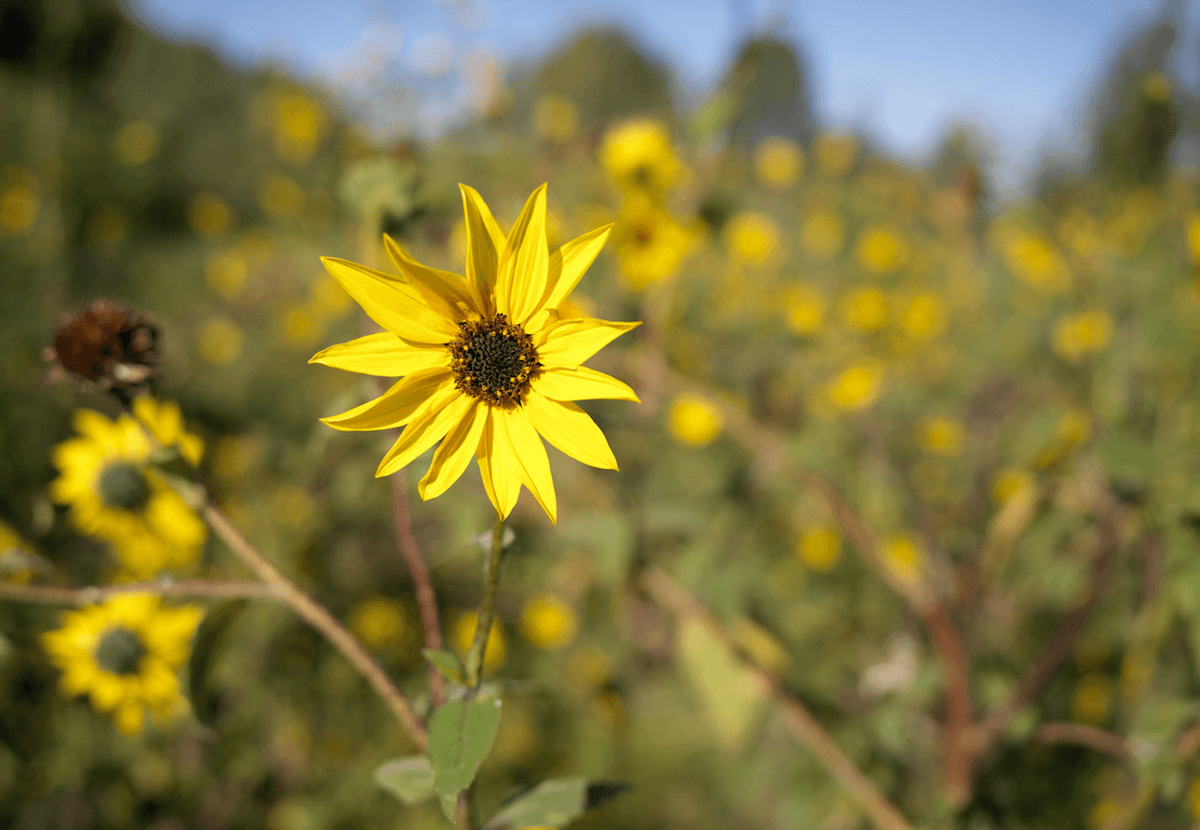
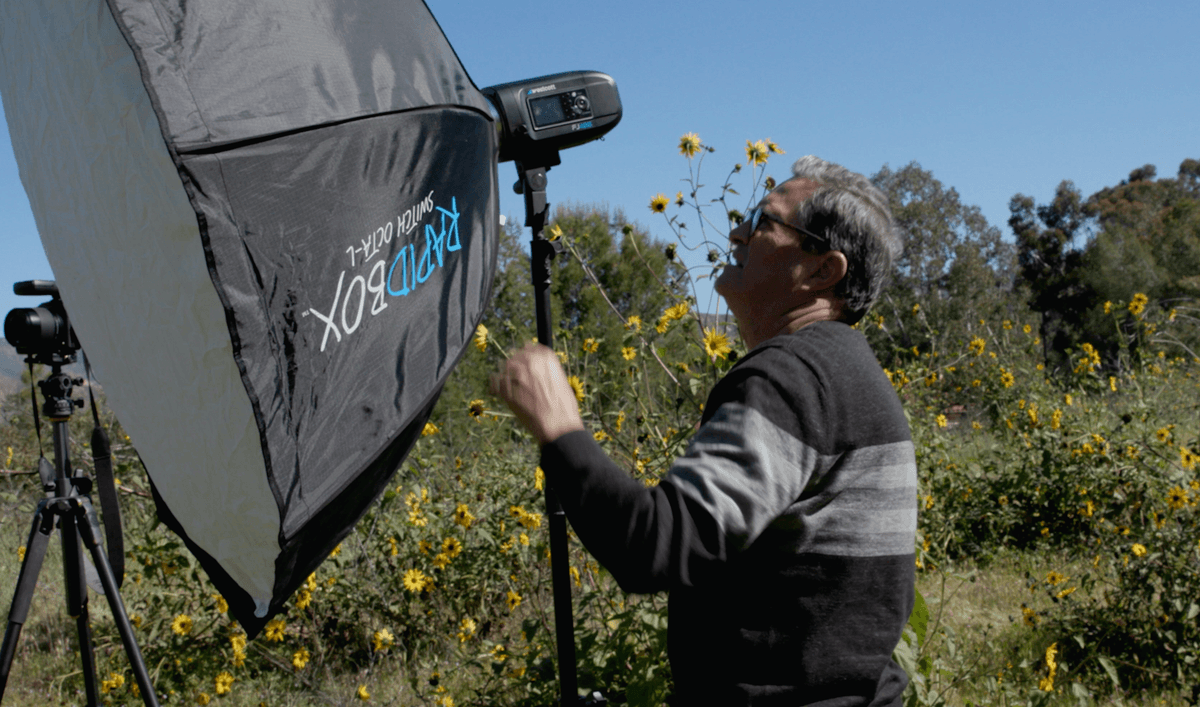
So who is this camera for? Who do you see buying this camera? They are just under $6000.
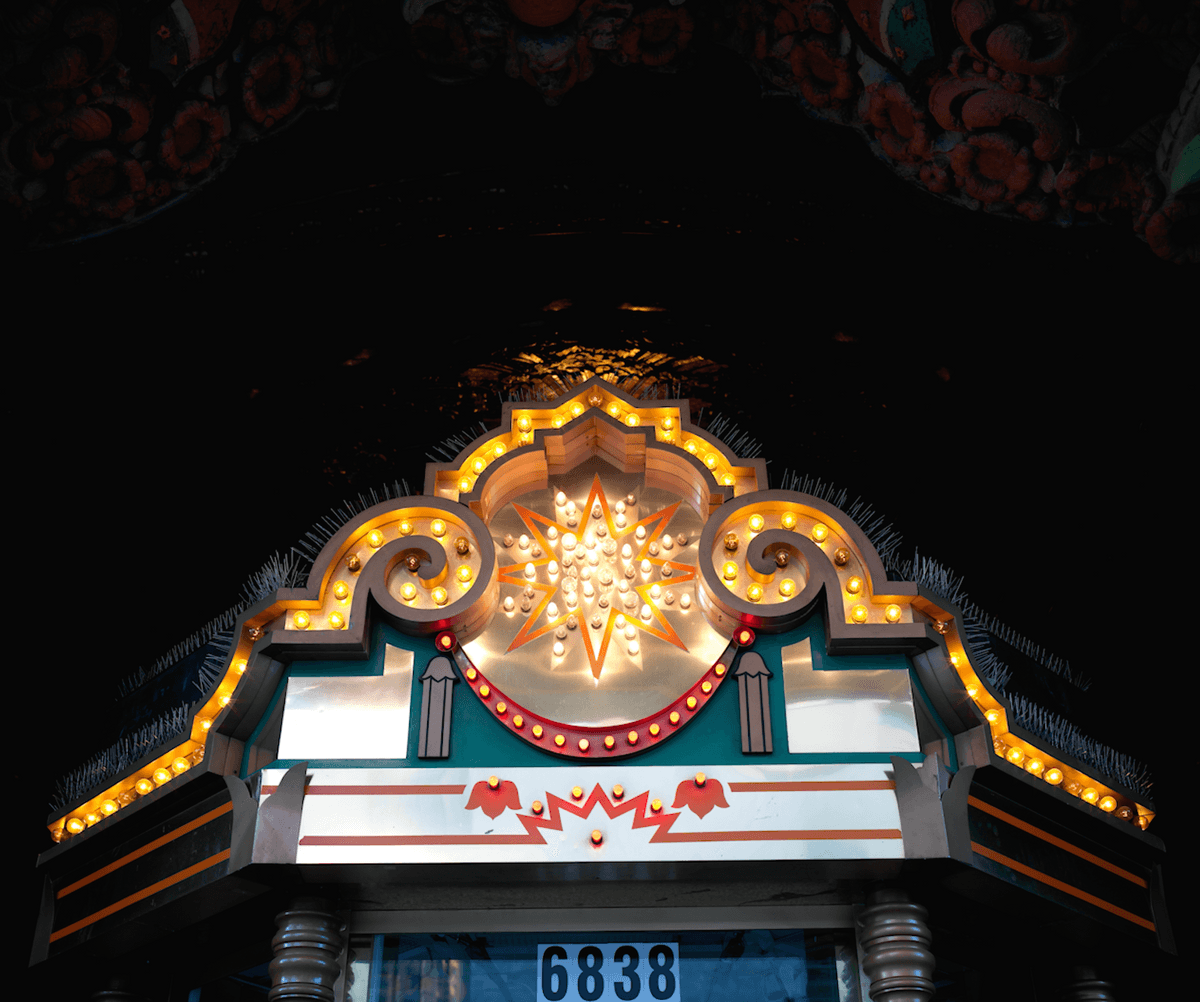
I think anyone doing fashion or architecture, especially architecture because of the large sensor and the lenses are gorgeous. Landscape and maybe still life would be a really good application for it.
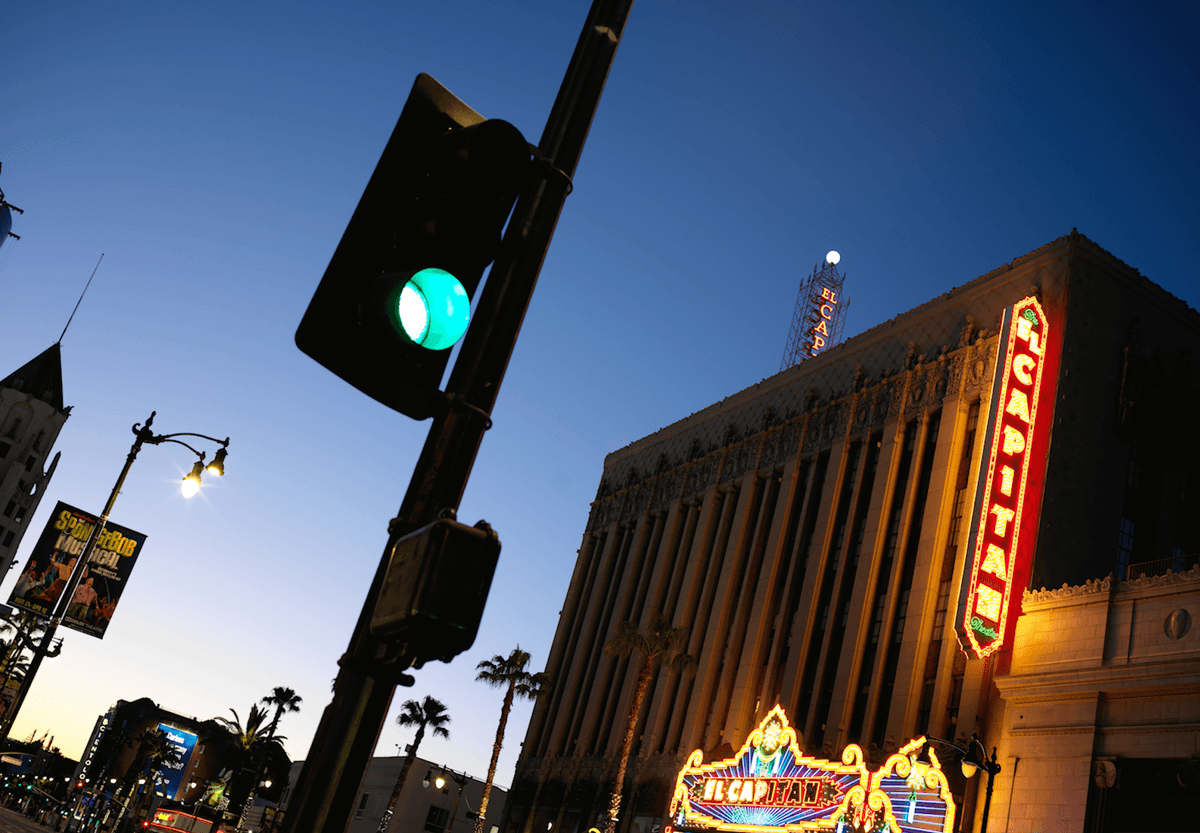
So with the medium format, there are not very many options out there. I would like to see us compare this to some of the other options that are out there. Just to get an idea of where it stands with the picture quality. So that is something for in the future.
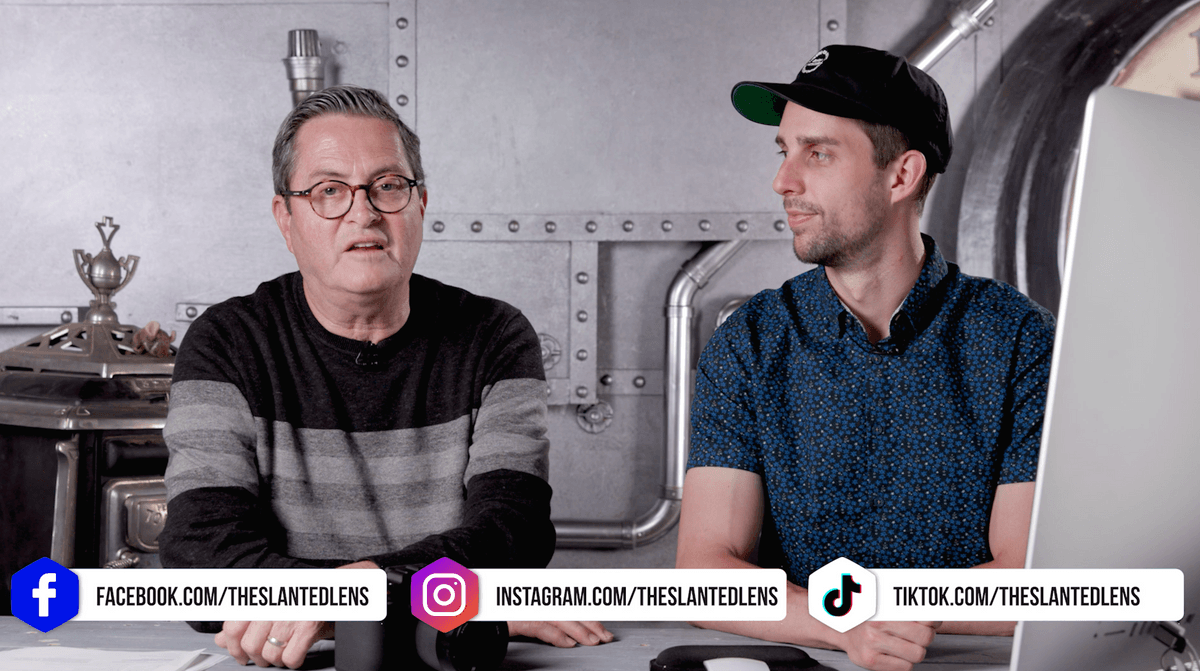
Make sure you subscribe to us here at YouTube.com/TheSlantedLens. We hope you enjoy the things we have there. We have a great group over on Patreon.com/TheSlantedLens. We are meeting with them regularly and having a great experience there. So make sure you check that out.

Keep those cameras rollin’ and keep on clickin’.
Enter our May GIVEAWAY: Win a SKB case for your Camera gear or Video Gear.
https://gleam.io/JwoJD/tsl-may-2020-giveaway-skb-cases
Hasselblad X1D II 50C: https://bhpho.to/3cYYk3T
Hasselblad XCD 45mm: https://bhpho.to/2W1VTXo
Westcott FJ400: https://www.fjwestcott.com?acc=d09bf41544a3365a46c9077ebb5e35c3
Follow The Slanted Lens-
Facebook: https://www.facebook.com/theslantedlens
Twitter: https://twitter.com/theslantedlens
Instagram: https://instagram.com/theslantedlens
Visit the webpage: https://theslantedlens.com
—
GEAR USED:
Canon C200
Samy’s Camera: https://shareasale.com/r.cfm?b=1498955&u=1207551&m=61234&urllink=&afftrack=
B&H: https://bhpho.to/2FJaH8d
Amazon: https://amzn.to/34aYAbJ
Canon 24-70 2.8
Samy’s Camera: https://shareasale.com/r.cfm?b=784055&u=1207551&m=61234&urllink=&afftrack
B&H: https://bhpho.to/2OCKjgl
Amazon: https://amzn.to/2O871PH
Sony A7 RIII
Samy’s Camera: https://shareasale.com/r.cfm?b=784055&u=1207551&m=61234&urllink=&afftrack
B&H: https://bhpho.to/2DZYHut
Amazon: https://amzn.to/2QFH0Zu
Canon EOS R
Samy’s Camera: https://shareasale.com/r.cfm?b=1492406&u=1207551&m=61234&urllink=&afftrack=
B&H: https://bhpho.to/2roExVE
Amazon: https://amzn.to/2QEnk8s
Tamron 24-70mm 2.8 G2
Samy’s Camera: https://shareasale.com/r.cfm?b=799819&u=1207551&m=61234&urllink=&afftrack=
B&H: https://bhpho.to/2J2wp4j
Amazon: https://amzn.to/2KCVw0v
Tamron 28-75 2.8
Samy’s Camera: https://shareasale.com/r.cfm?b=799850&u=1207551&m=61234&urllink=&afftrack=
B&H: https://bhpho.to/2FsWNno
Amazon: https://amzn.to/2KJ3rcD
Tamron 17-28 2.8
Samy’s Camera: https://shareasale.com/r.cfm?b=1498957&u=1207551&m=61234&urllink=&afftrack=
B&H: https://bhpho.to/2ItePur
Amazon: https://amzn.to/37qnWVh
KLM audio module
B&H: https://bhpho.to/2qqbyUG
Vanguard VEO 2 Pro 263CPV
Samy’s Camera: https://shareasale.com/r.cfm?b=784055&u=1207551&m=61234&urllink=&afftrack
B&H: https://bhpho.to/3495qhT
Amazon: https://amzn.to/2KGGiYr
Platypod
B&H: https://bhpho.to/2W7xqQx
Samy’s Camera: https://shareasale.com/r.cfm?b=784055&u=1207551&m=61234&urllink=&afftrack
Spyder Color Checker
B&H: https://bhpho.to/3aI9XKL
Samy’s Camera: https://shareasale.com/r.cfm?b=800647&u=1207551&m=61234&urllink=&afftrack=
Westcott
Westcott FJ400 and Rapid Box Switch Octa-M : https://www.fjwestcott.com?acc=d09bf41544a3365a46c9077ebb5e35c3
__
Support The Slanted Lens by shopping our affiliate links:
Weekly Photography Deals & More at B&H: https://bhpho.to/2AxlpH2
Amazon: http://amzn.to/1T7Z20D
Samy’s Camera:
—
Subscribe to The Slanted Lens and get new videos every Thursday
http://bit.ly/1RgdYoM
Visit our SPONSORS
Tamron Lenses: http://bit.ly/2mZgkoz
SKB: http://www.skbcases.com/
Platypod: http://www.platypod.com/
Westcott: https://www.fjwestcott.com/?acc=d09bf41544a3365a46c9077ebb5e35c3
Luminar by Skylum: https://macphun.evyy.net/c/2073517/645022/3255
Datacolor: http://bit.ly/2lZk8Bi
Triple Scoop Music: http://www.triplescoopmusic.com
LITRA: https://litra.com/
Morgan Photo Retouch: http://www.morganphotoretouch.com
TSL Store: https://theslantedlens.com/tsl-store/